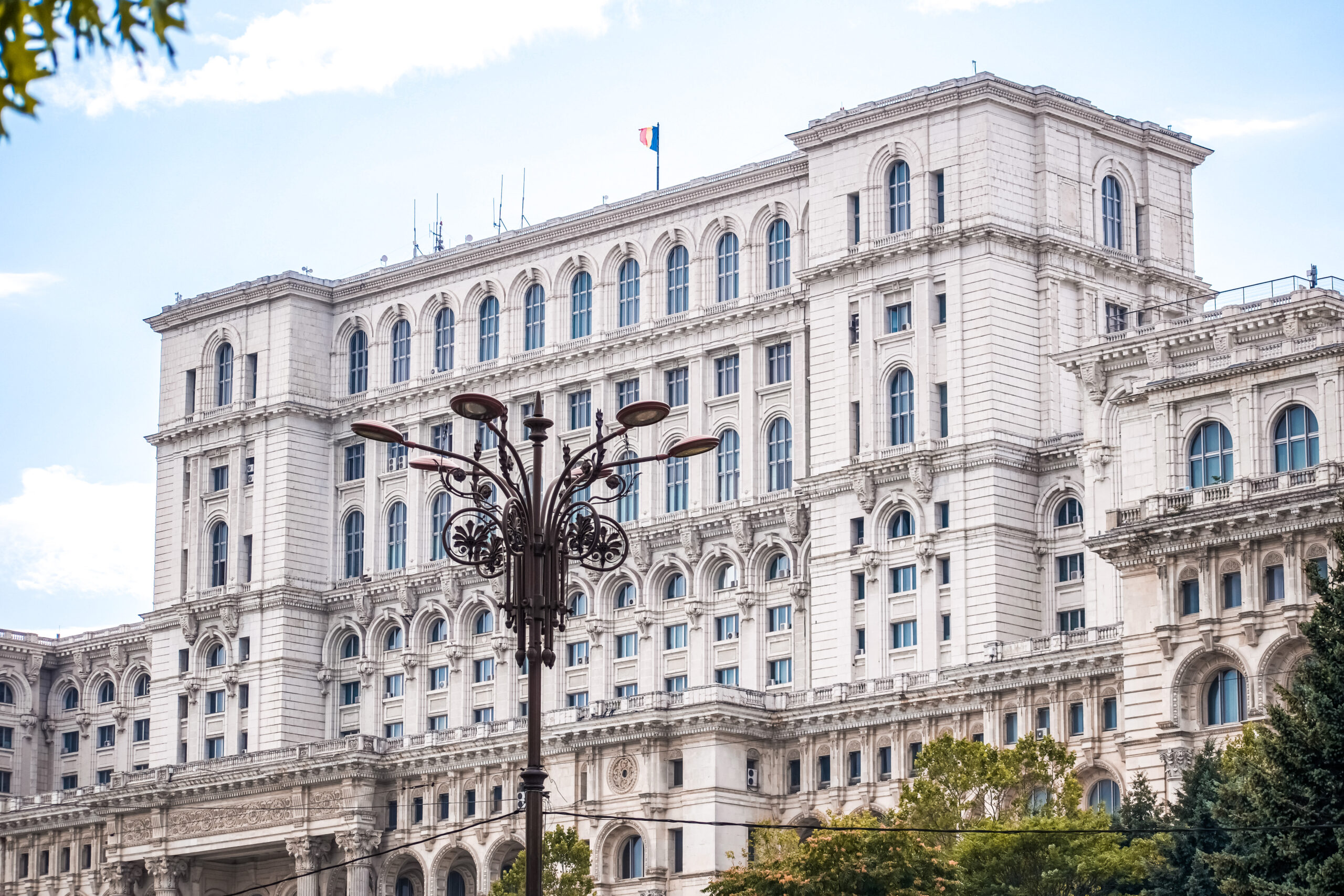
Bucharest is one of the most interesting and big cities in Eastern Europe with more than 1.8 million residents. Its stunning architecture with a plethora of Art Nouveau buildings, its numerous huge parks and beautiful squares definitely justify why Bucharest is also called “Paris of the East”. Keep reading to explore the beauty of Bucharest and get inspired for your next trip!
Day 1
Revolution Square
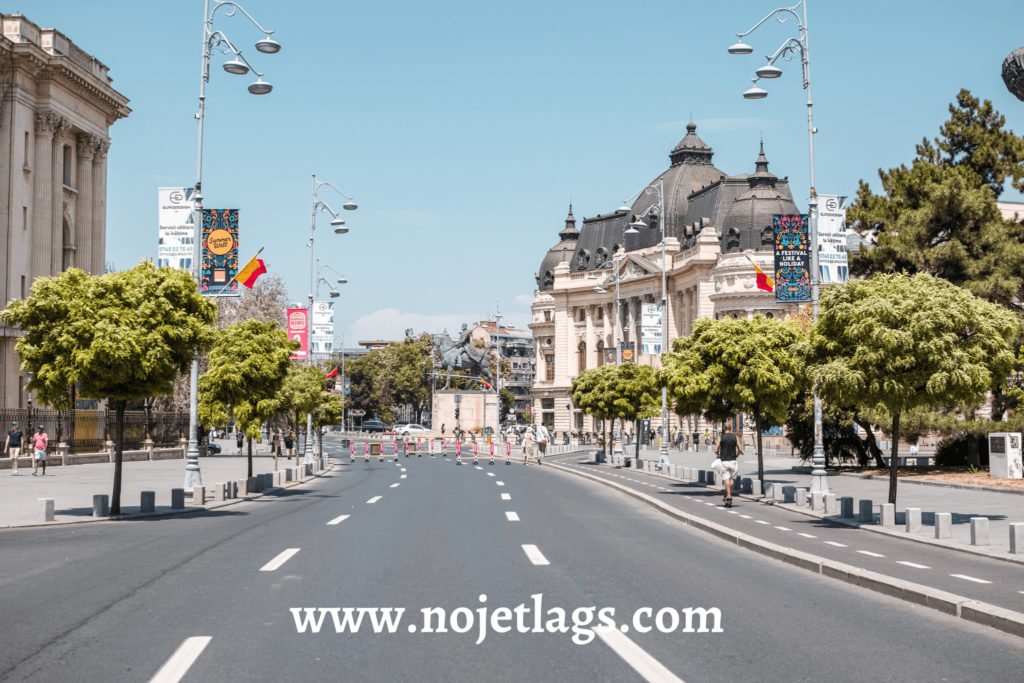
Bucharest’s Revolution Square has a great historical background. In the center of the square lies a 25 meters obelisk built to honor the victims that lost their lives during the Romanian Revolution. The Square was originally called Palace Square until 1989. Lastly, a plethora of 19th-century palaces, socialist-era buildings, and museums can be found there.
Memorial of Rebirth
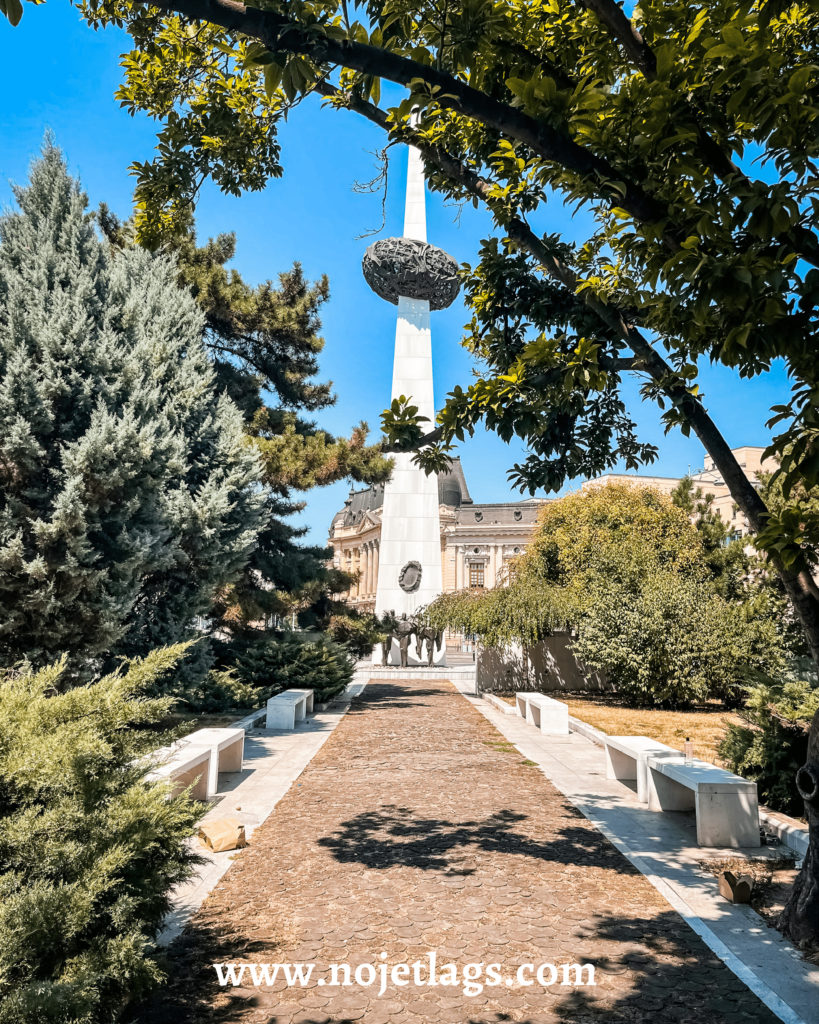
This memorial complex was inaugurated in the August of 2005 in Revolution Square, where Romania’s Communist-era dictator, Nicolae Ceaușescu, was publicly overthrown in December of 1989. The memorial has gained many nicknames throughout the years, with It commonly referred to as the “Potato on a Stick” or “Potato on a Skewer” monument.
Kretzulescu Church
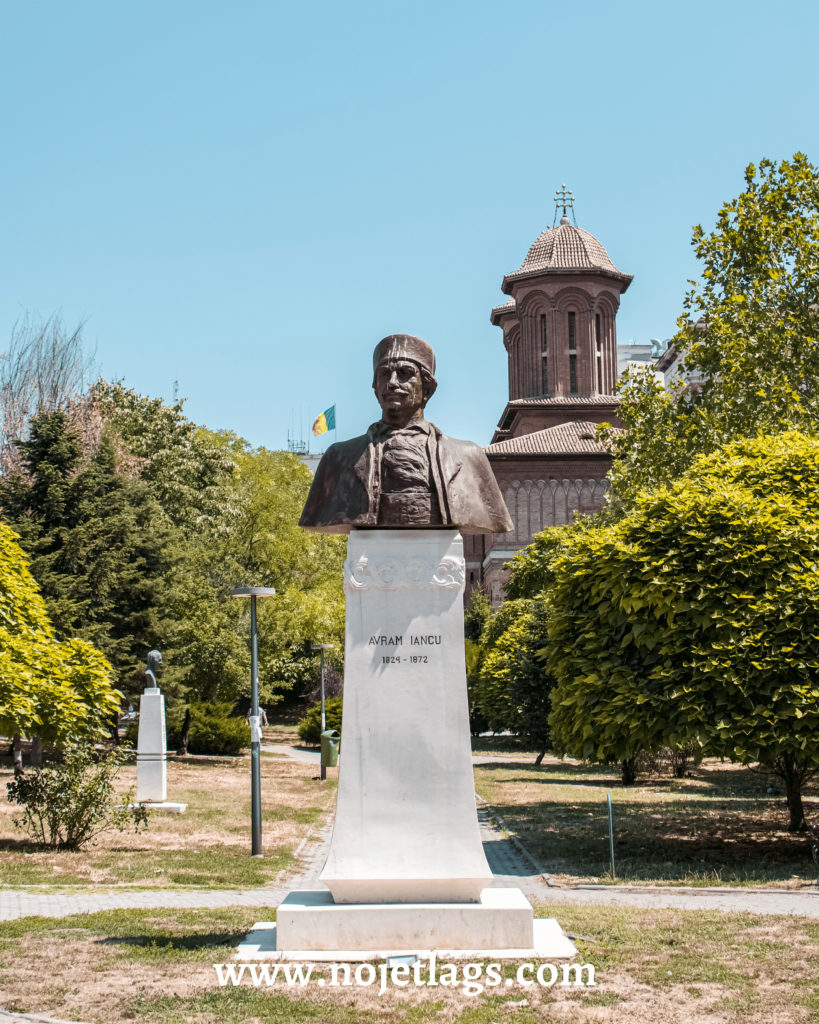
It is an Eastern Orthodox church that can be found at one of the corners of Revolution Square, next to the former Royal Palace.
Central University Library Carol I
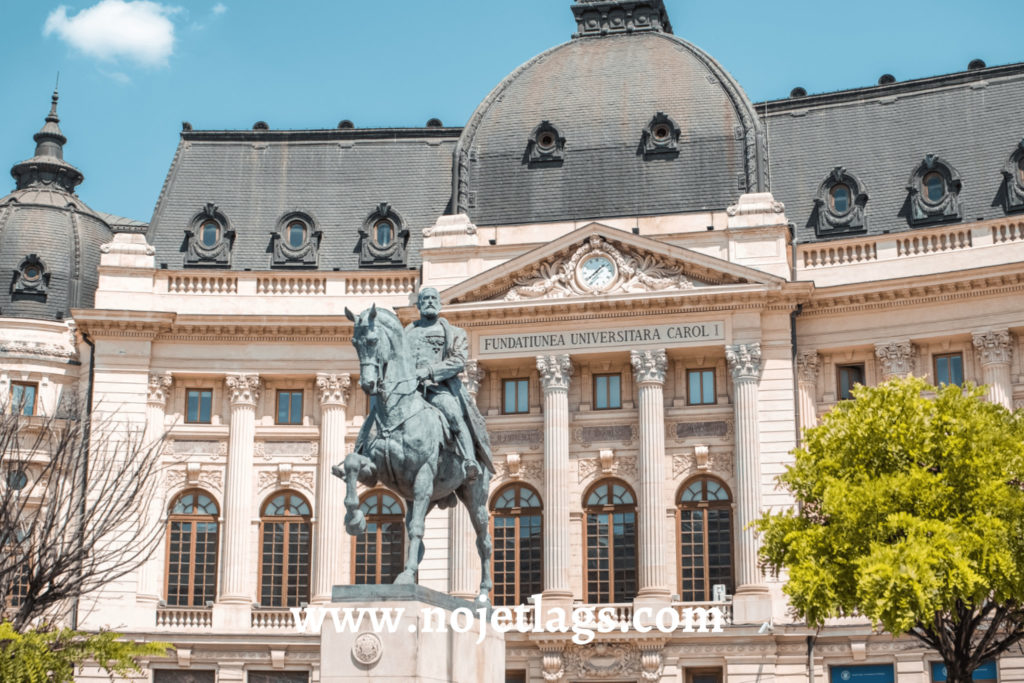
The Library was founded in 1895 as the Carol I Library of the University Foundation. Until then the university was lacking a library. It began with an initial stock of 3,400 books and periodicals, until 1949 when it was established as the Central Library of Bucharest’s University with its collection of 516,916 volumes. Today, the library contains millions of books and periodicals, despite the fire that started during the Romanian Revolution in 1989.
National Museum of Art
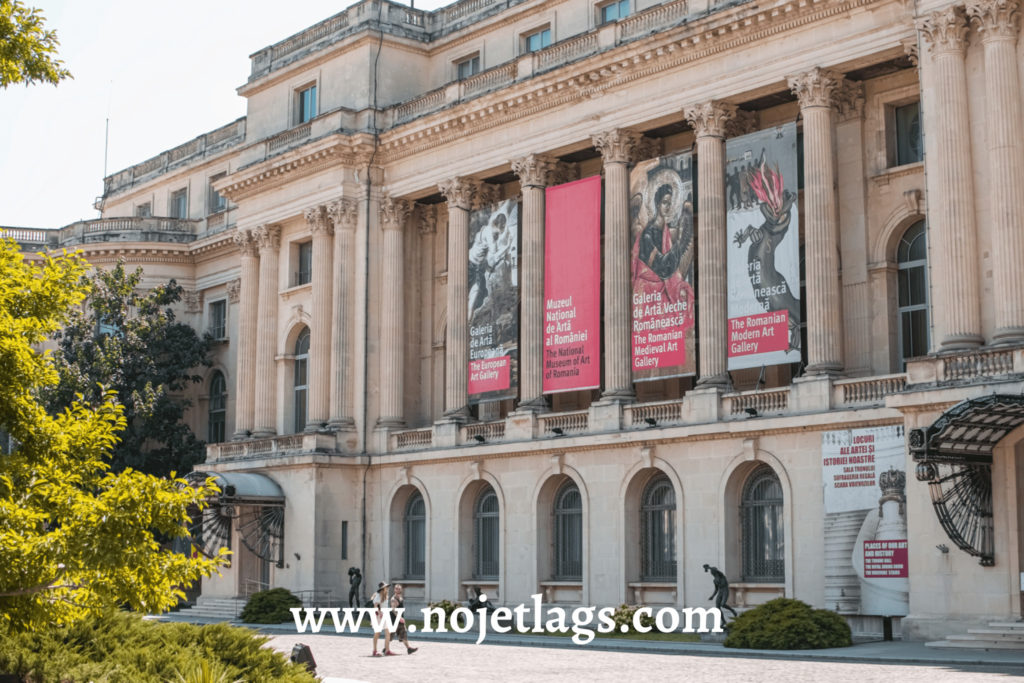
The museum was seriously damaged during the 1989 revolution, causing it to be closed for renovation work for a decade. Nowadays, the museum’s collection is divided into three major categories: The Old Romanian Art Gallery, the Modern Romanian Art Gallery , and the European Art Gallery.
For more information regarding ticket prices and visitation hours click here.
Athenaeum
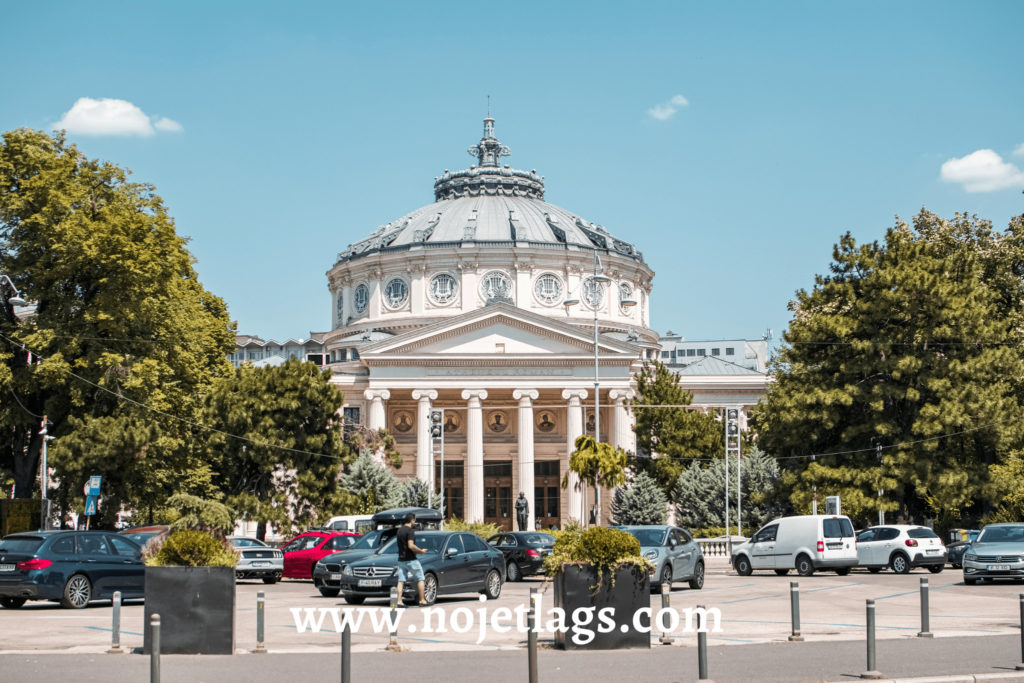
It is a concert hall, which was classified as a historical monument in 2004 and a part of the European heritage since 2007. It has 800 seats with great visibility towards the stage and impeccable acoustics.
For more information regarding the calendar and tickets visit here.
Also Read Our Budapest And Vienna Guides!
Day 2
Cismigiu Gardens
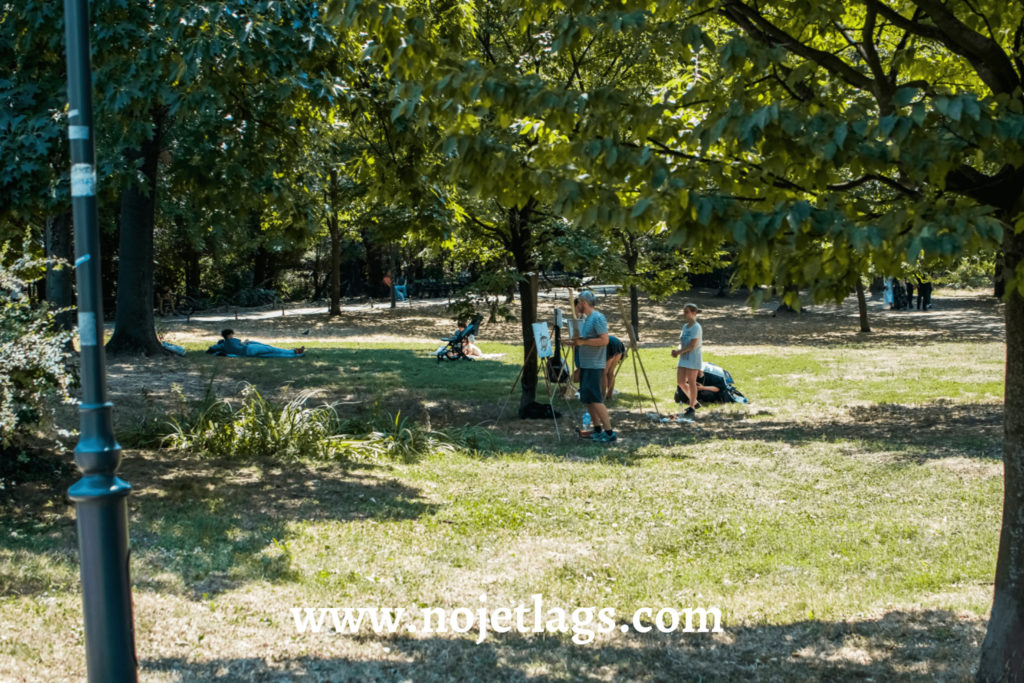
It is the most central and one of the biggest parks of the city, featuring a great artificial lake which spans the gardens from multiple areas. There can be found a couple of cafes and refreshment kiosks. It is just a lovely place to relax!
Palace of The National Military Circle
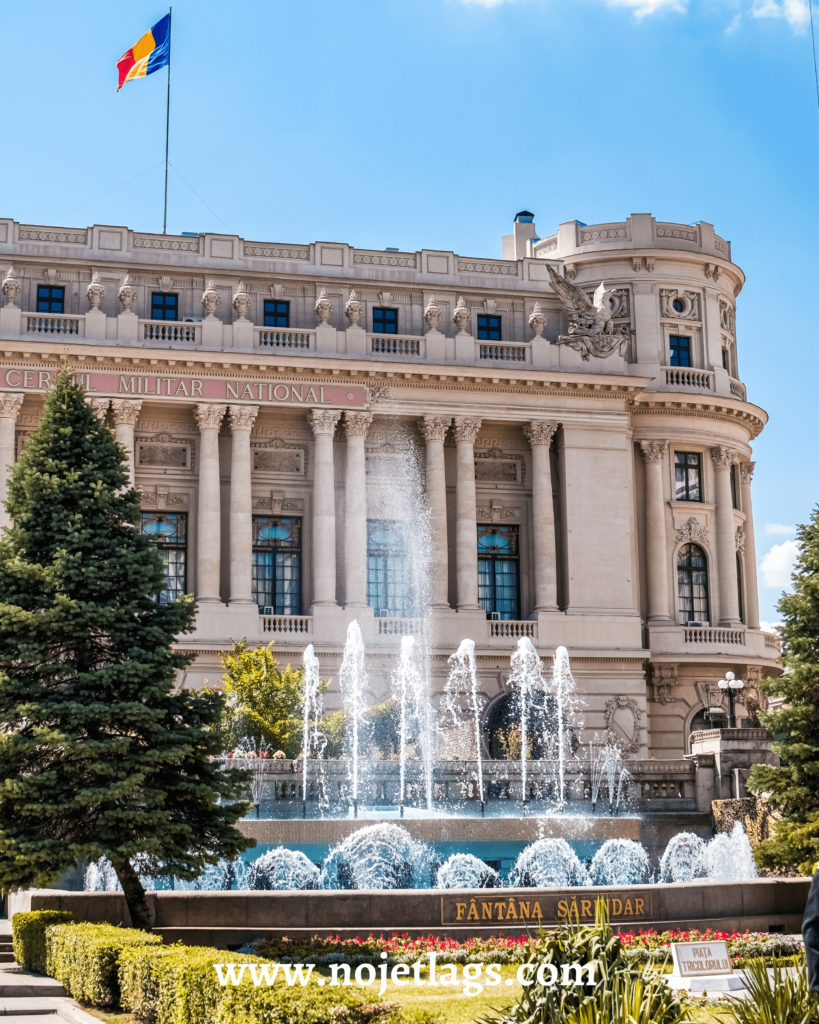
The construction of the Palace began before World War I and was finished when the war finished. Nowadays, the National Military Circle is a cultural institution that belongs to Romanian Army and includes a cinema, a theatre, a library, a concert hall, ballrooms and a restaurant.
Bucharest’s Old Town
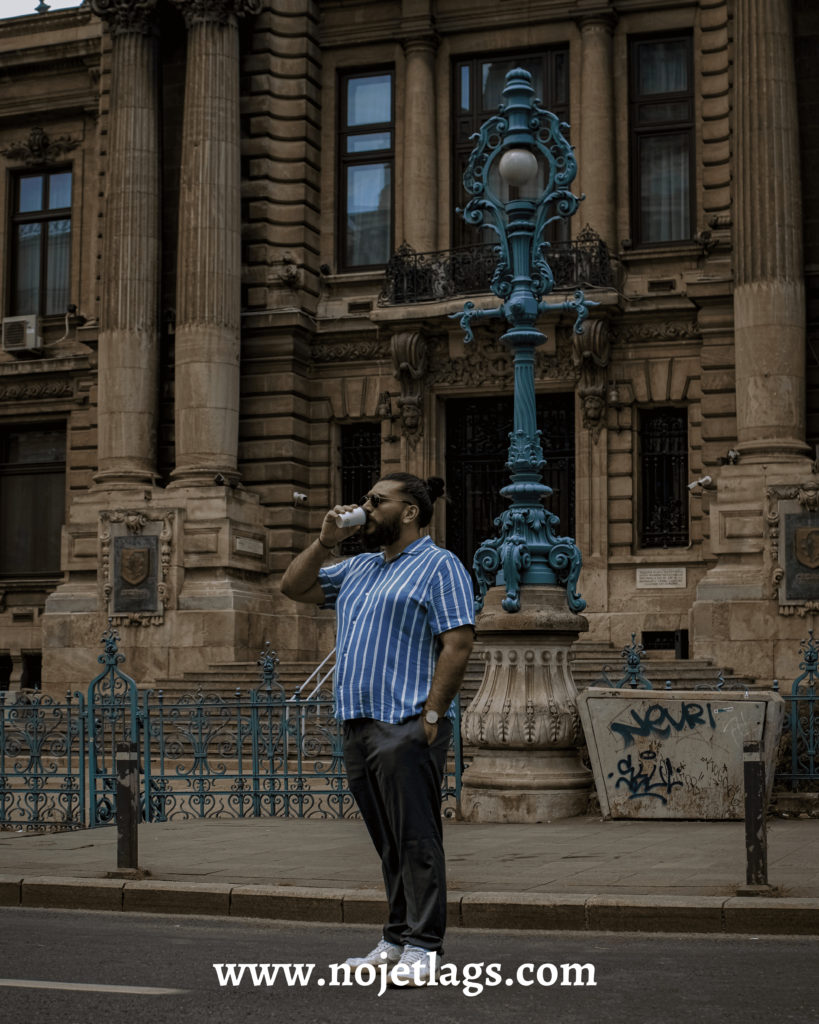
It is definitely the most visited area of Bucharest, hosting many neoclassical and neo-baroque style buildings. There can also be found numerous restaurants, bars and shops. Take your time to wander around the beautiful old town of Bucharest and explore and enjoy its beauty.
Palace of the Deposits and Consignments
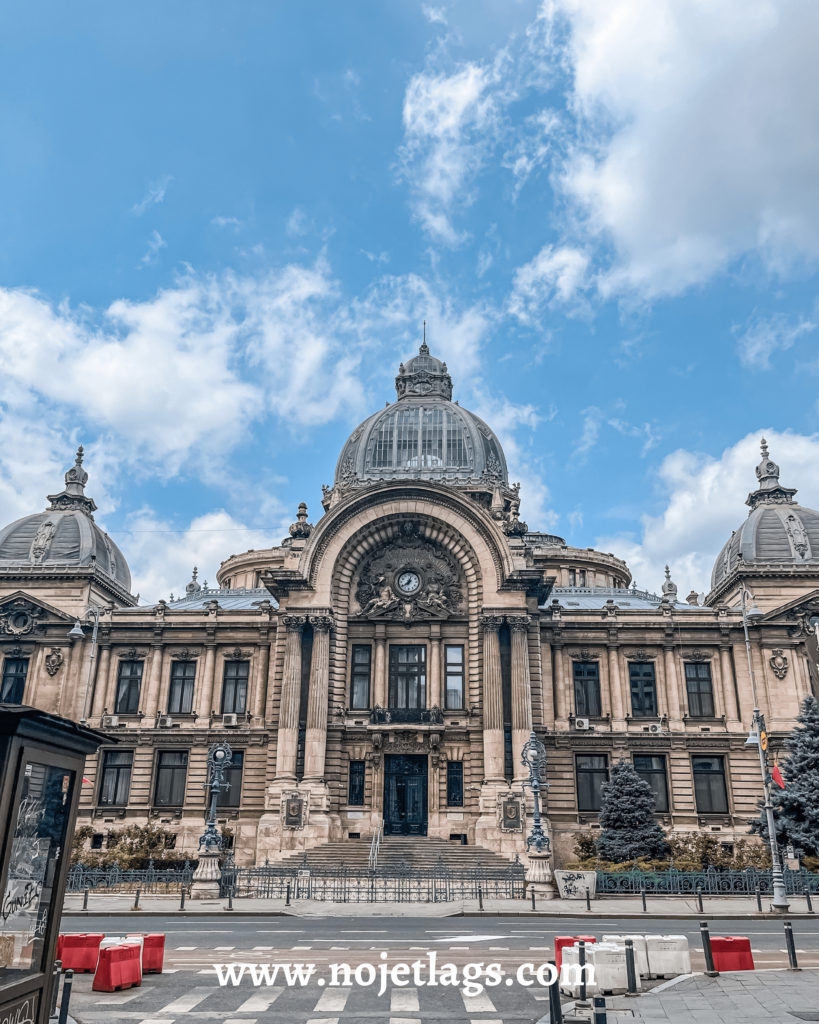
Located at the old Town, the Palace of the Deposits and Consignments is one of the famous buildings of Bucharest. The palace was built as a new headquarters for Romania’s oldest bank, the public savings institution Casa de Depuneri, Consemnațiuni și Economie.
Stavropoleos Monastery
The Stavropoleos Church is part of Stavropoleos Monastery, founded, by the Greek monk Ioanichie who became a Metropolitan of Stavropolie. The Church is almost three centuries old. Its style combines local, Oriental, Byzantine, and late Italian Renaissance elements. Among its distinctive elements are the loggias with stone columns carved with floral patterns, the carved door and window frames, and the use of interior columns.
St. Nicholas Church
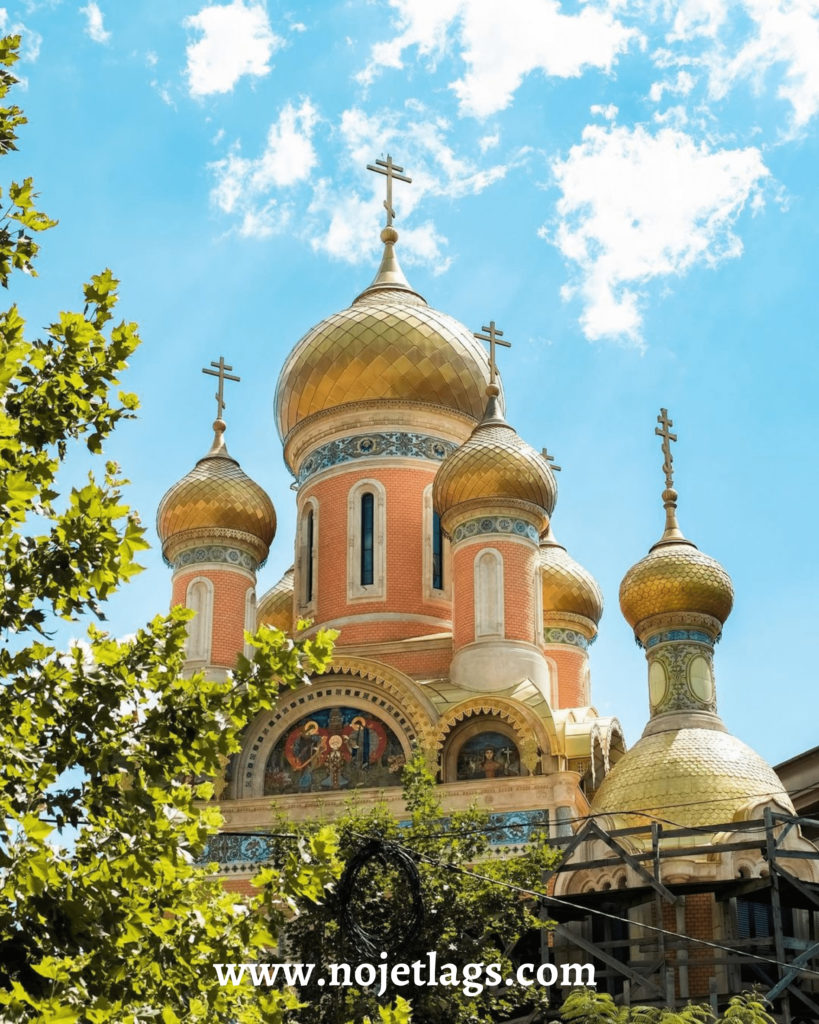
The Russian Tsar Nicholas II built this Russian Orthodox church for students of the University of Bucharest. Its impressive gold-gilded iconostasis is said to be a copy of the altar in Arhangelsk Cathedral in Moscow’s Kremlin.
National Museum of Romanian History
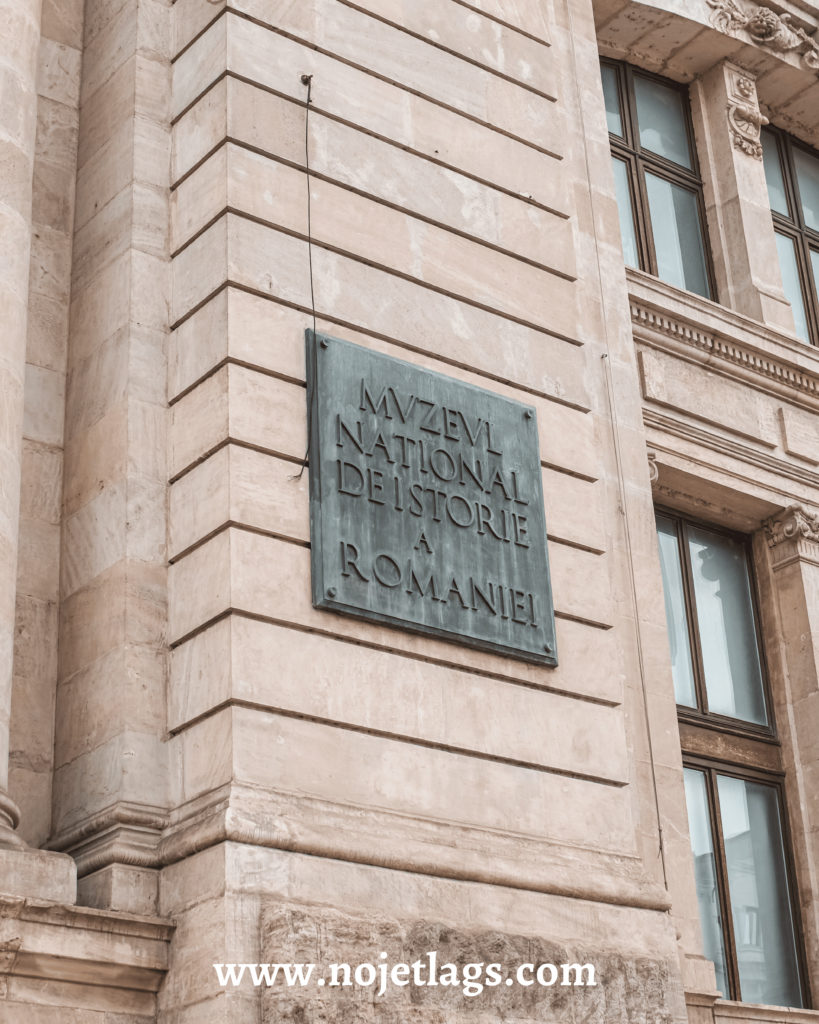
The National History Museum of Romania was founded in 1972. The museum is said to host over 650,000 pieces, organized in the following collections: pottery, lapidarium – tegularium , numismatics, philately, medals-seals, jewels, manuscripts, printed works, plastic arts, decorative art, historical photographs, engravings, maps, metal, weapons and equipment, textiles and furniture.
At present the National History Museum of Romania presents two permanent exhibitions – The Historical Treasure, Lapidarium-The Copy of Trajan’s Column- and temporary exhibitions in the Central Hall.
For more information regarding visitation hours and tickets click here.
Macca – Villacrosse Passage
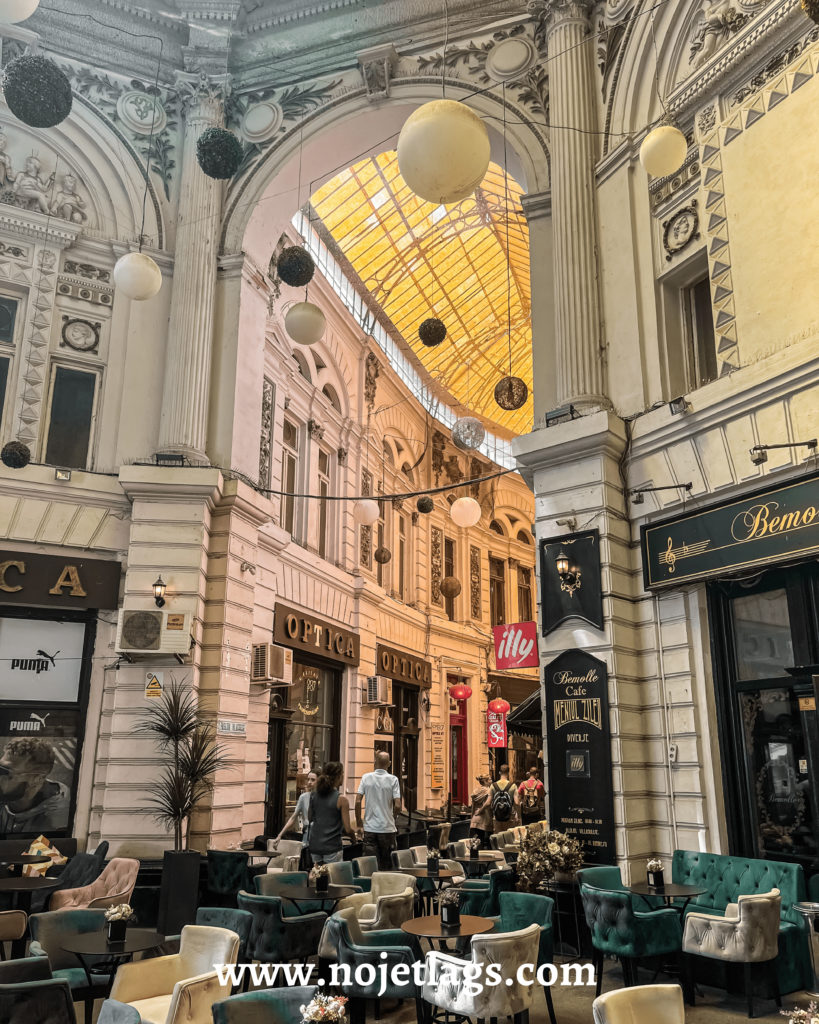
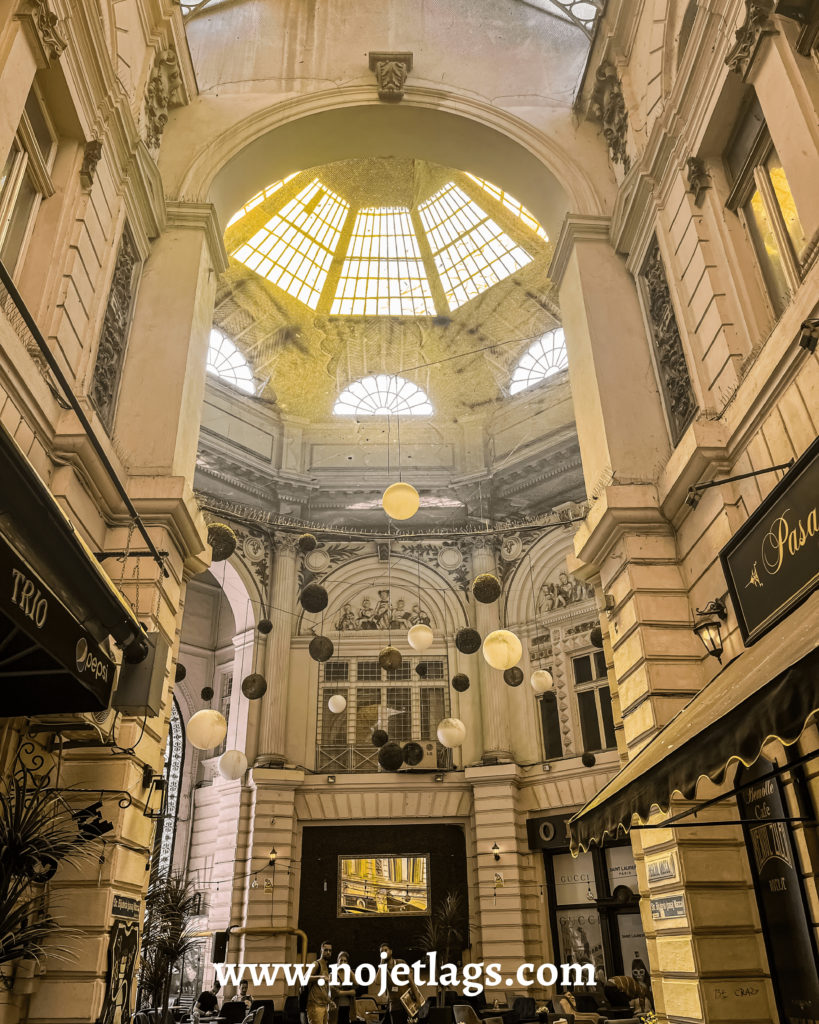
Anybody can definitely find a small resemblance with Galleria Vittorio Emanuele in Milan. This spot is not very famous but you surely can visit it. More specifically, it hosts several indoor/outdoor eating establishments, including an Egyptian-themed bar/restaurant, the Blues Cafe, a bistro, a Chinese restaurant and a wine bar. The passage also connects Calea Victoriei and Lipscani Street, through the exit of the Eugeniu Carada street.
Carturesti Carusel
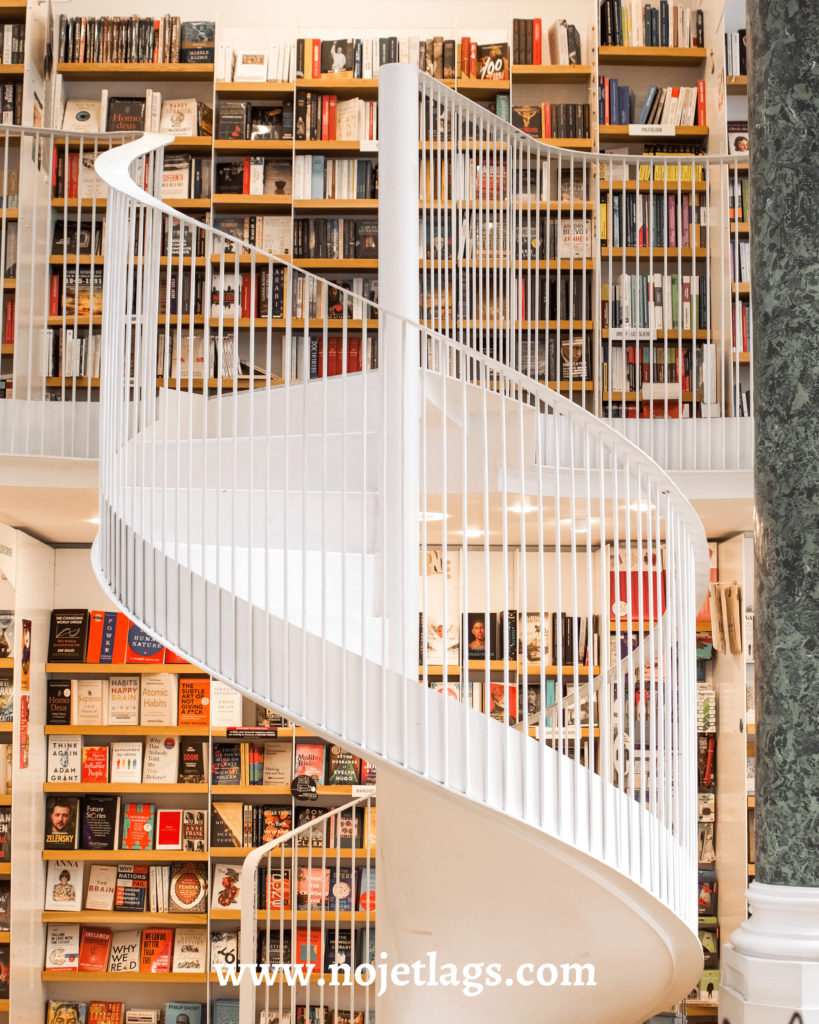
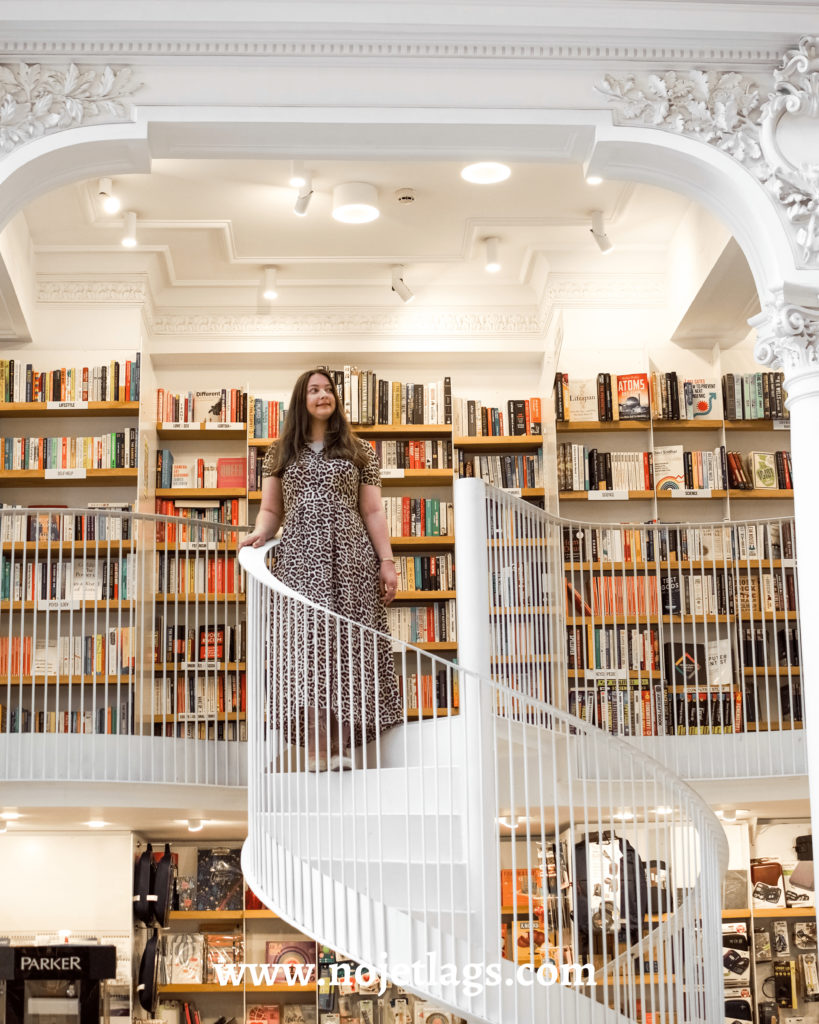
It is one of the most beautiful and interesting bookstores in the world. Carturesti Carousel has 6 floors and almost 1000cm2 of space, where you can find a great variety of books as well as souvenirs. In its last floor you can find its bistro where you can enjoy the book of your preference with a beverage or food.
Visiting the bookstore at the early hours of the morning is recommended in order to avoid big crowds.
For more information click here.
📍Strada Lipscani 55, București 030033
The Romanian Academy
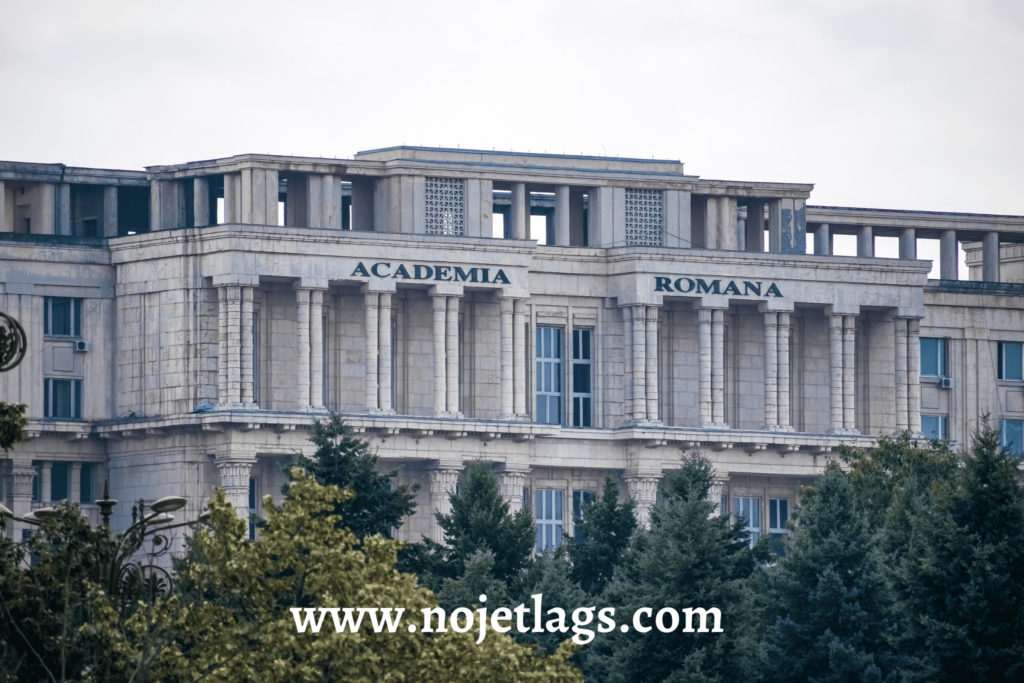
The Romanian Academy is a cultural forum founded in 1866. It covers the scientific, artistic and literary domains. The academy has 181 active members who are elected for life.
Enjoying our Bucharest Guide? Take a look at our Rome Guide!
Day 3
Piata Unirii
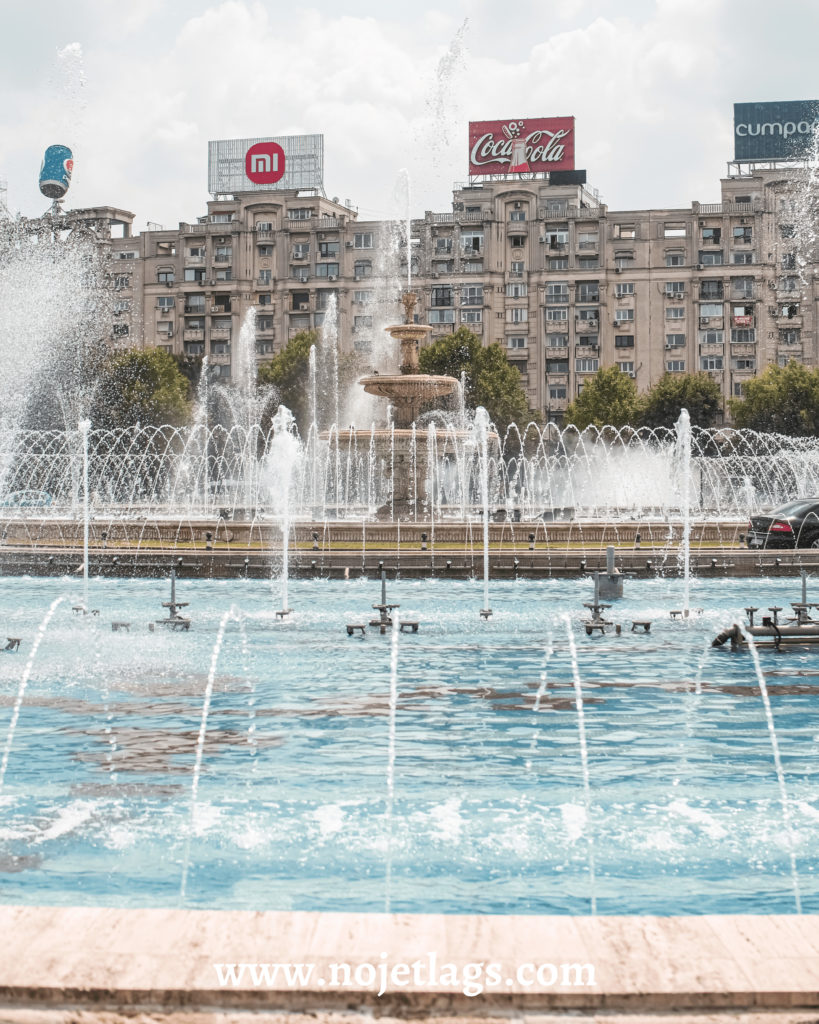
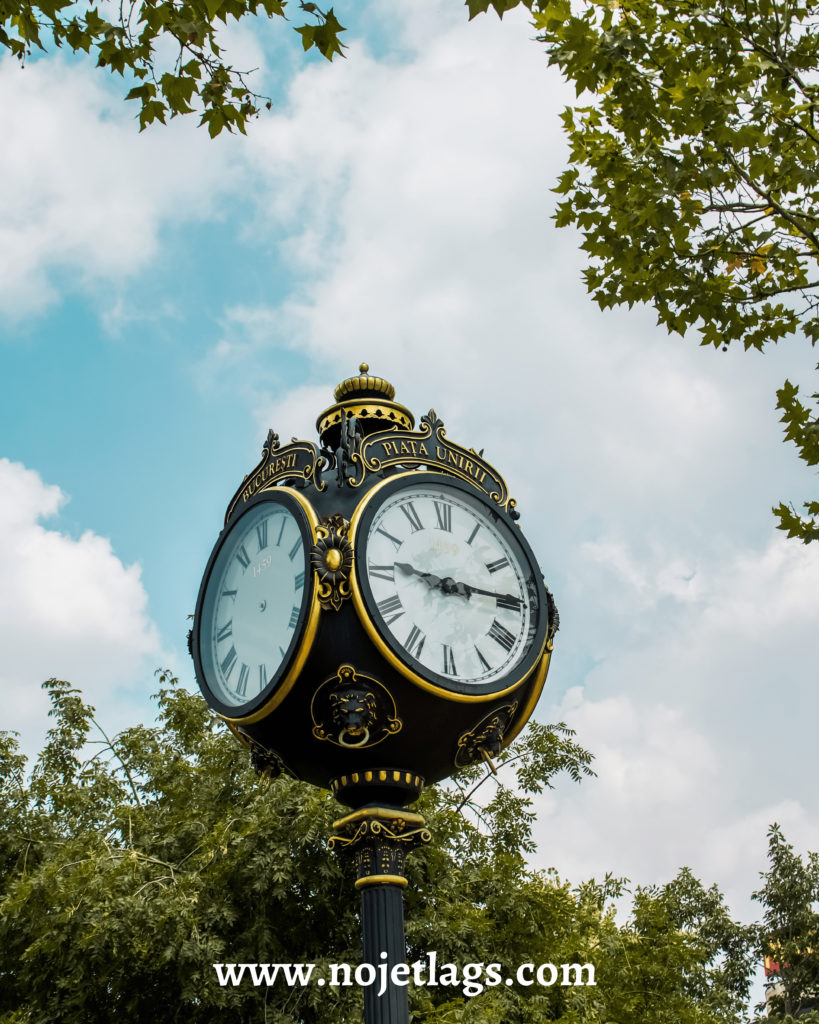
It is one of the largest squares in central Bucharest, where Sectors 1, 2, 3, and 4 all meet. It was originally constructed during the Communist era as the Boulevard of the Victory of Socialism and was renamed after the Romanian Revolution. The fountains in the center of the square are really interesting to admire, especially during the multimedia shows every Friday, Saturday, and Sunday which however last until the beginning of October. In June and July, the shows will start at 9:30 p.m., in August, they will return at 9:00 p.m., and in the fall, they will begin at 8:00 p.m. The shows last about 45 minutes, and it’s free to attend.
Palace of Parliament
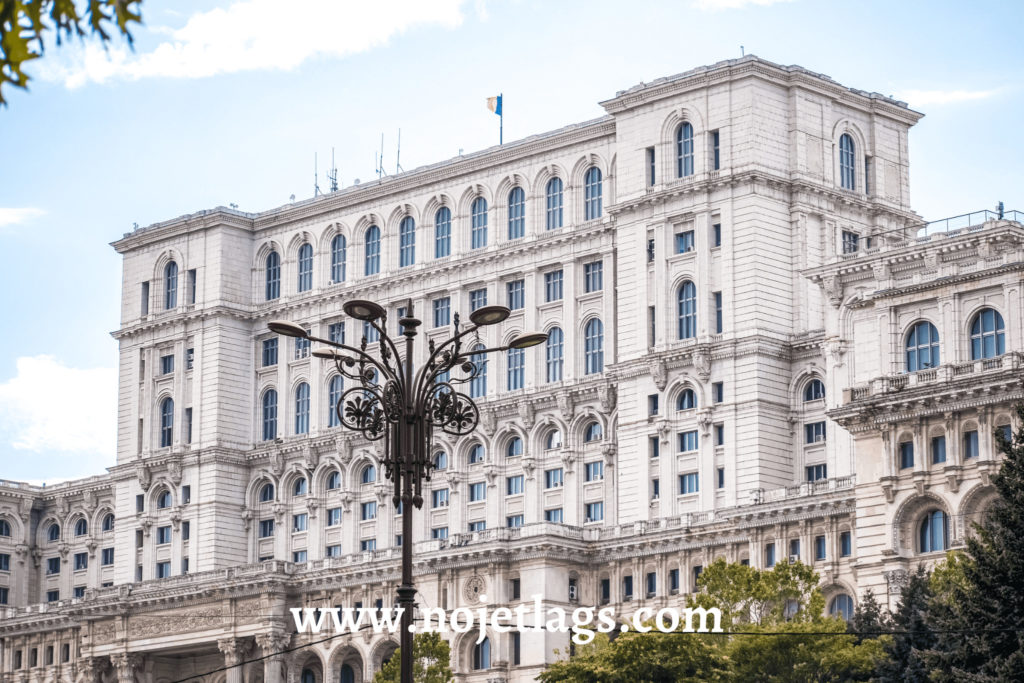
Bucharest is also home to one of the largest and heaviest buildings in the world. That building is the Parliament of Bucharest which was constructed from Romanian marble in 1978. The building is so enormous that it can actually take hours to almost a day to visit all of its premises. However, despite the fact that it is the heaviest building in the world it still has plenty of empty spaces inside.
For more information about opening hours and tickets click here.
Day 4
Arch of Triumph
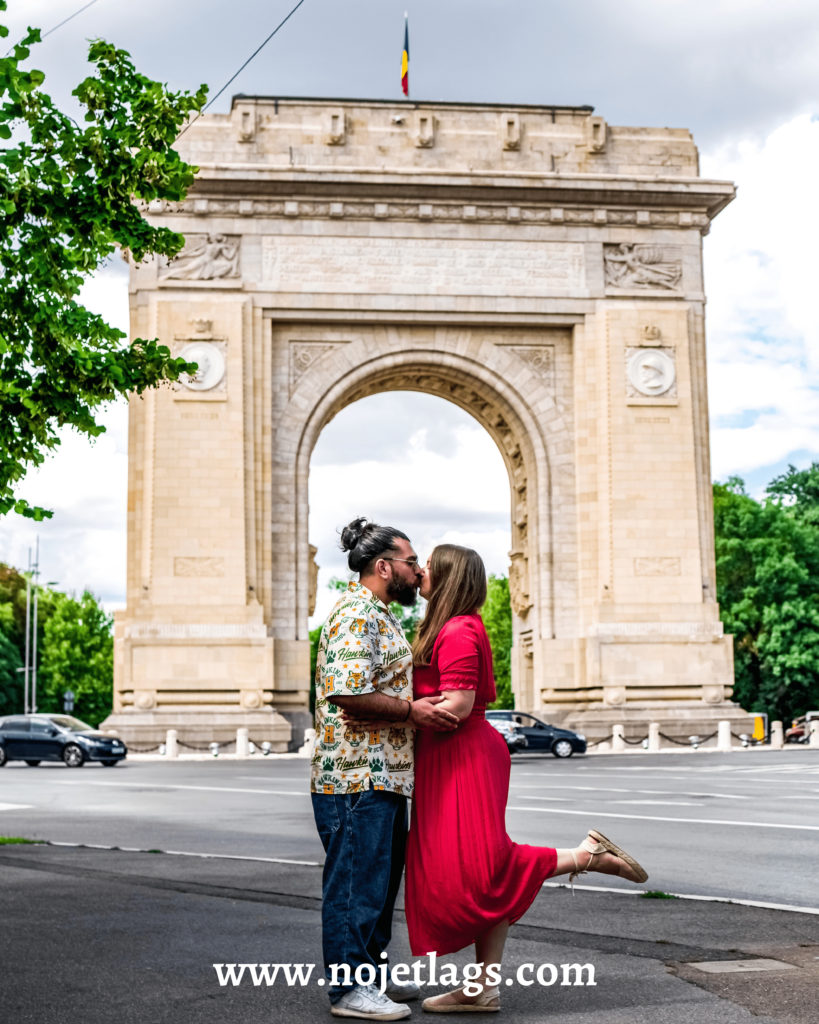
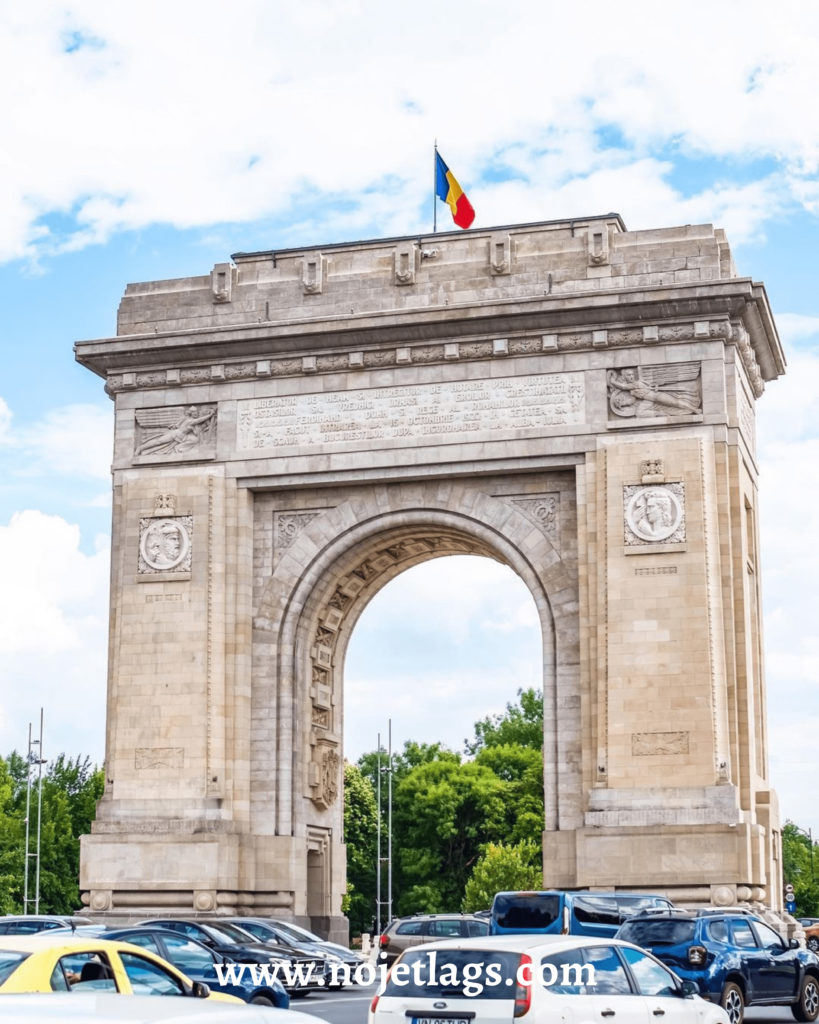
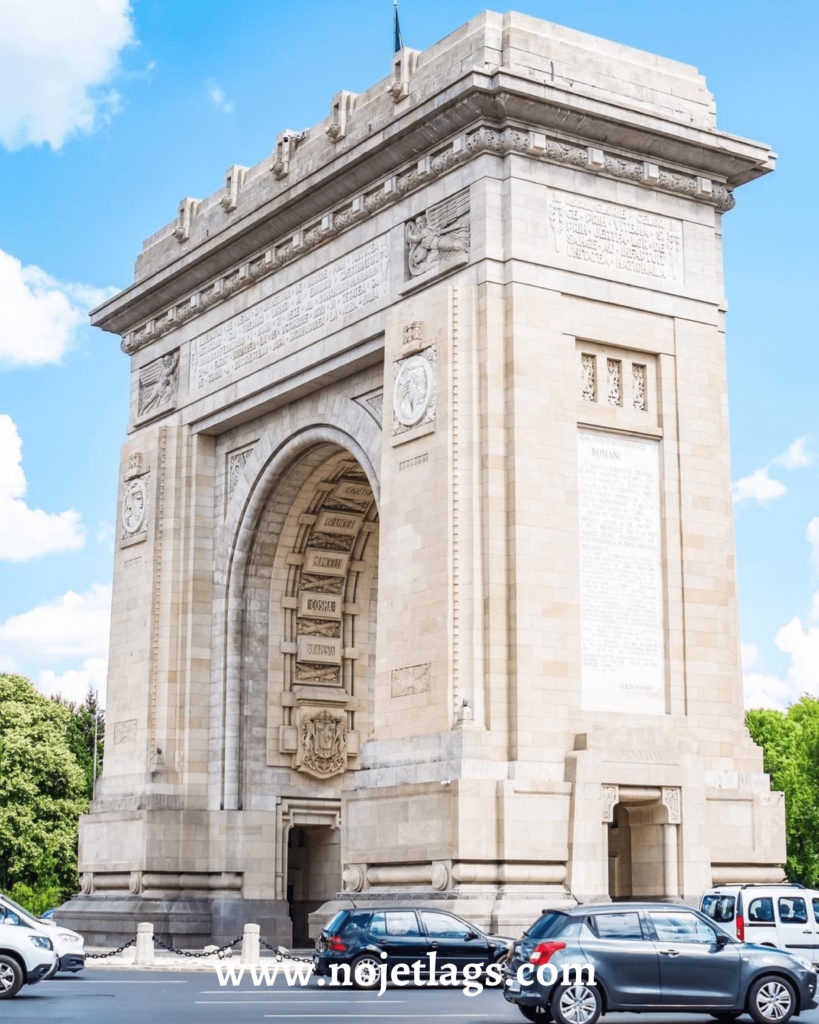
Another famous resemblance with other European Cities, to be more specific Paris and Rome, is the Romanian Arch of Triumph. The Arch of Triumph was built between 1921 and 1922 as a symbol of Romania’s victory in the First World War and is 27 meters tall.
On the South facade of the Arch can be found two bronze medallions featuring King Ferdinand and Queen Maria. On one of the facades is inscribed the King’s Proclamations to the Country on the occasions of the war and of the coronation at Alba Iulia:
“After centuries of sufferings faithfully endured and hard struggles for the preservation of national being, … the justice was fulfilled for Romanian people by the sword of King Ferdinand with the help of the whole nation and the thought of Queen Mary.”
Kiseleff Park
Another very picturesque attraction of Bucharest is Park Kiseleff. The park is the oldest one in Bucharest, divided into two halves by Kiseleff Boulevard and features plenty of water ponds, sculptures and busts of famous Romanian people. You can escape the bustle of the city center and explore winding alleys lined with flower beds and elderly trees.
The entrance of the park is free and you can visit the park all day long.
Herastrau Lake – Park
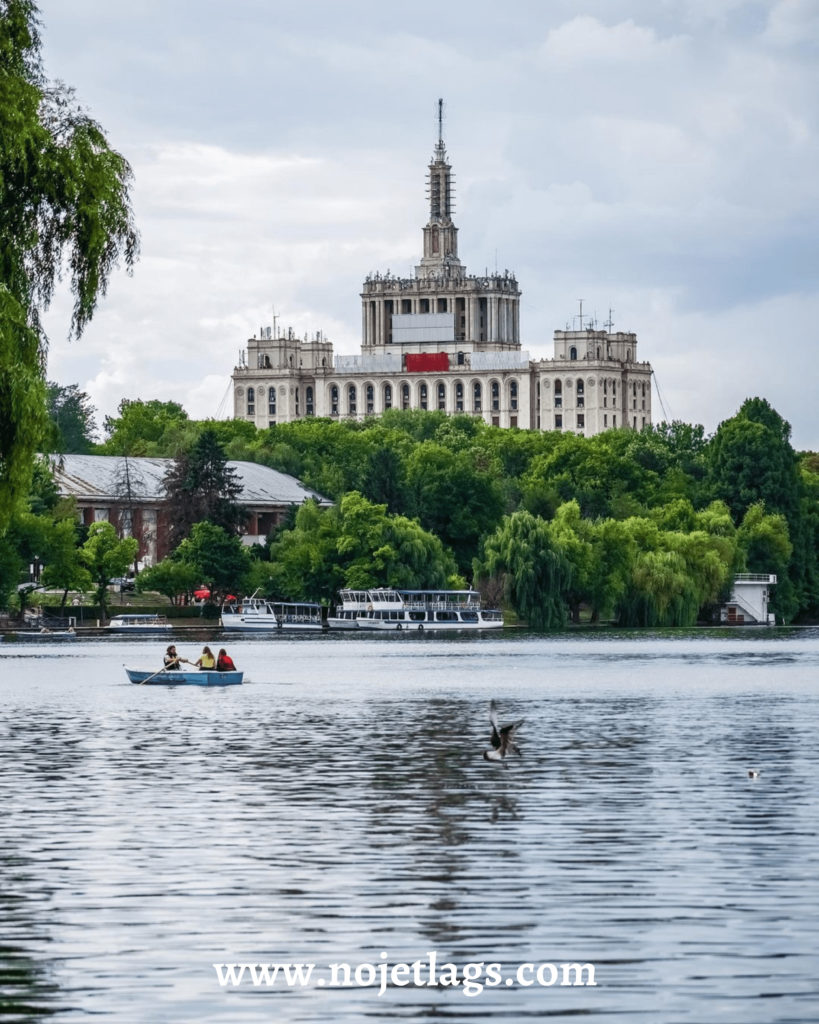
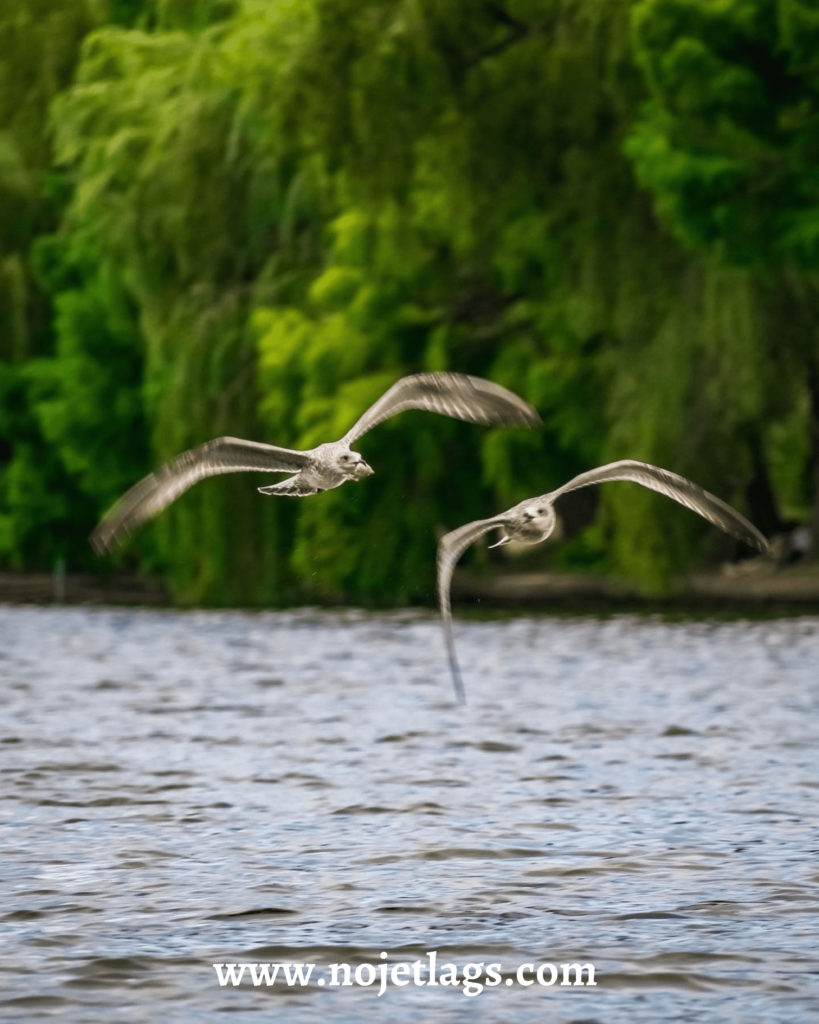
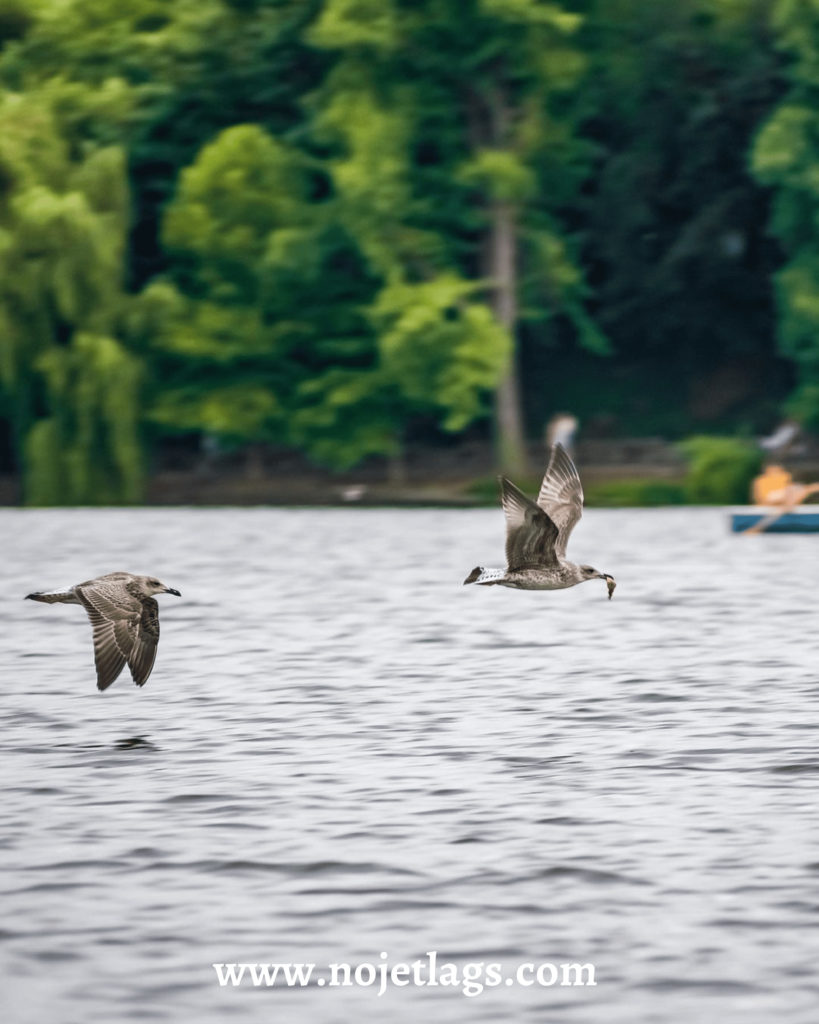
It is the most popular park, built on Herastrau lake, in 1936. It is not only the largest park in the Capital city of Romania but also the largest park located inside a city in Europe. You can spend a whole day in Herastrau Park, surrounded by the beautiful nature. You can also rent a boat and sail away on the lake or a hydro-bicycle to glide on the waters, but you can also pay a visit to the Herastrau Aquarium. In addition, you will be impressed by the unique way in which the clear water of Lake Herastrau reflects the Press House and the Sky Tower at sunset, two of the tallest buildings in its vicinity. You will also be able to walk through the Japanese Garden, which houses some of the most beautiful specimens in the park, such as cherry blossoms and Japanese acacia with weeping branches.
House of Free Press
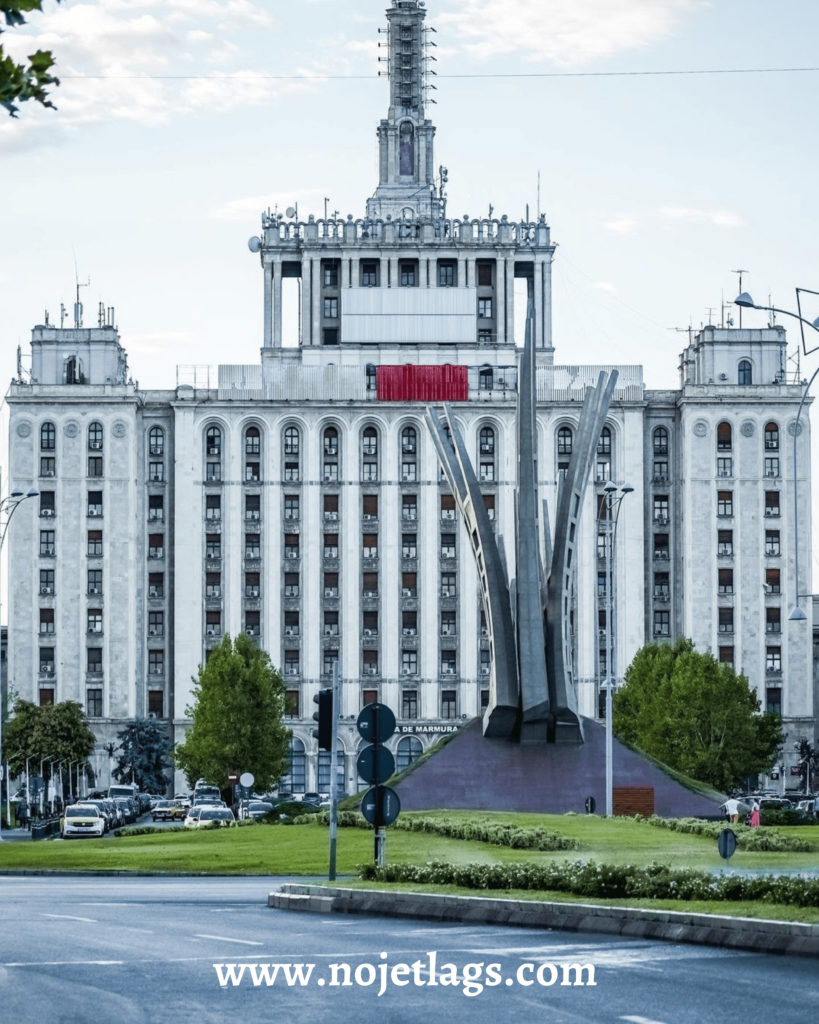
The House of the Free Press is one of the landmarks of Bucharest that best reminds of the communist regime. The building was built between 1952 and 1957 and served as the headquarters of the Communist Party’s official publication, The Spark. Following the Romanian Revolution from 1989, the name of the building was replaced with the “House of the Free Press”. Currently, the building is used for purposes similar to those it served until 1989 (newsrooms and typographies).
Where To Stay In Bucharest
Cismigiu Hotel ****
📍Located at 38 Regina Elisabeta Boulevard, Sector 5, 050017
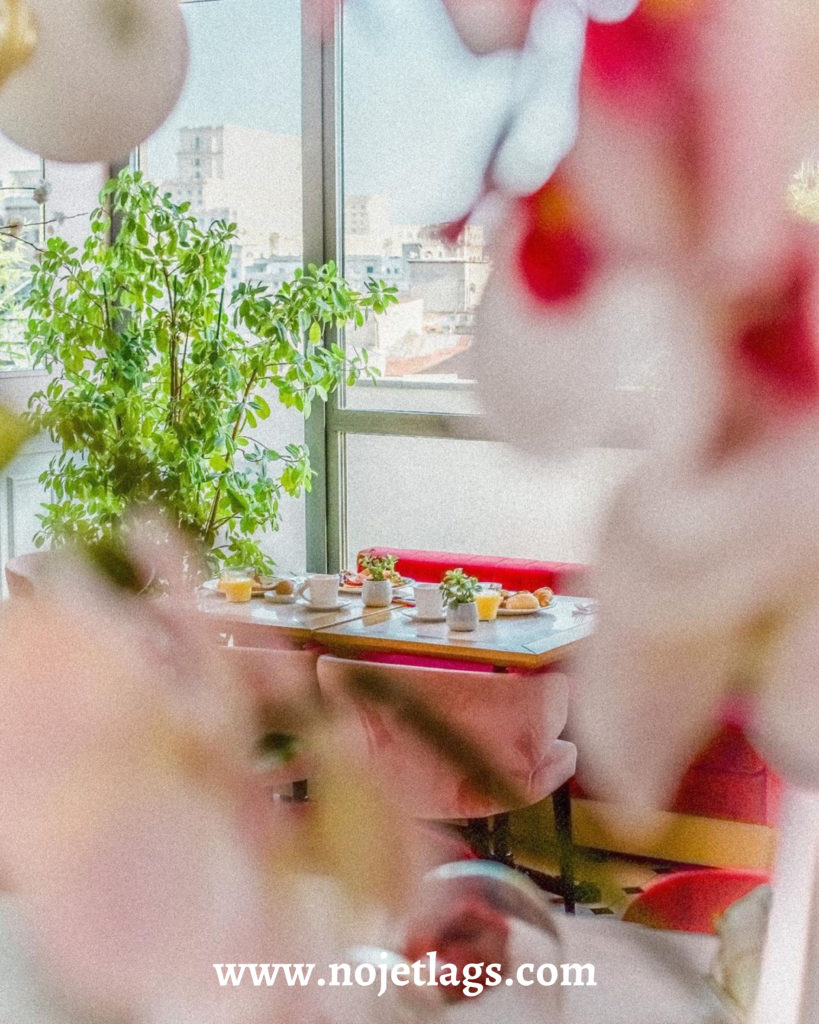
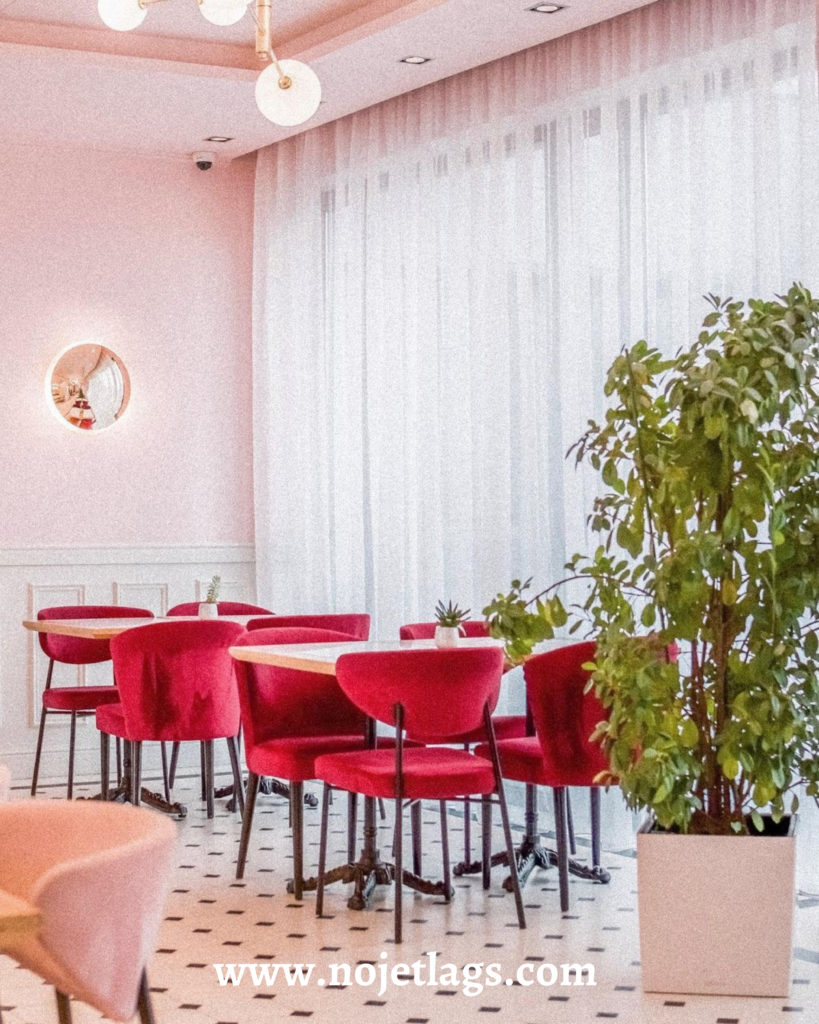
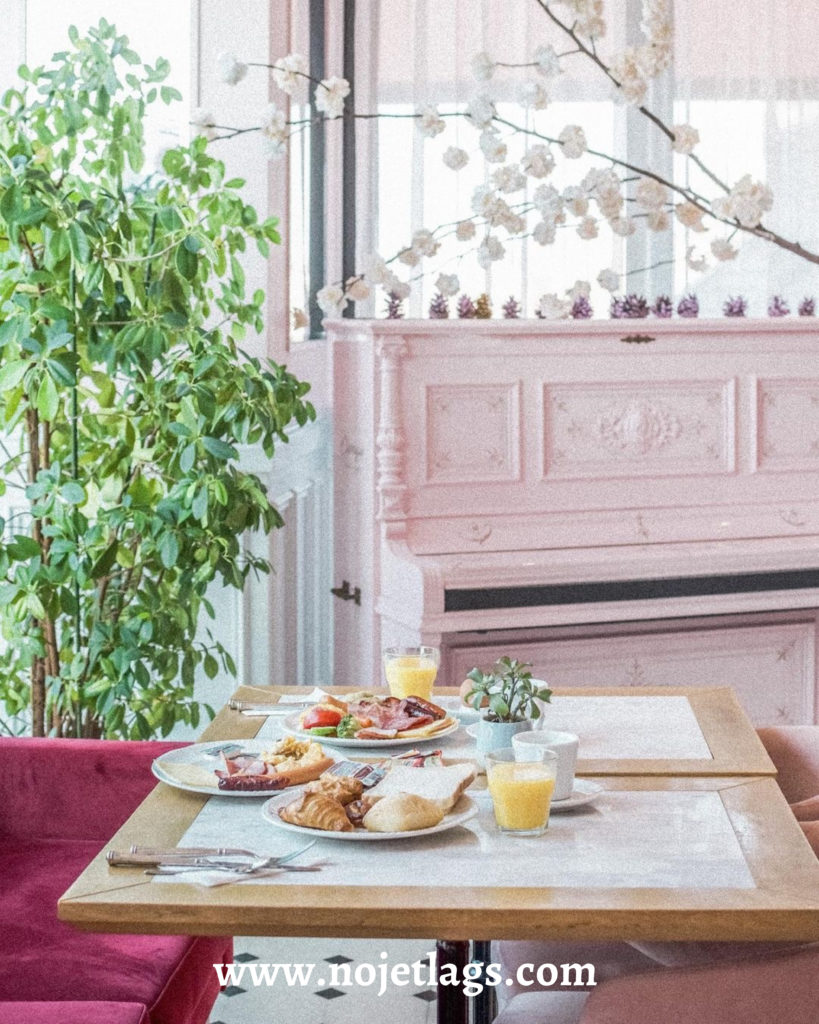
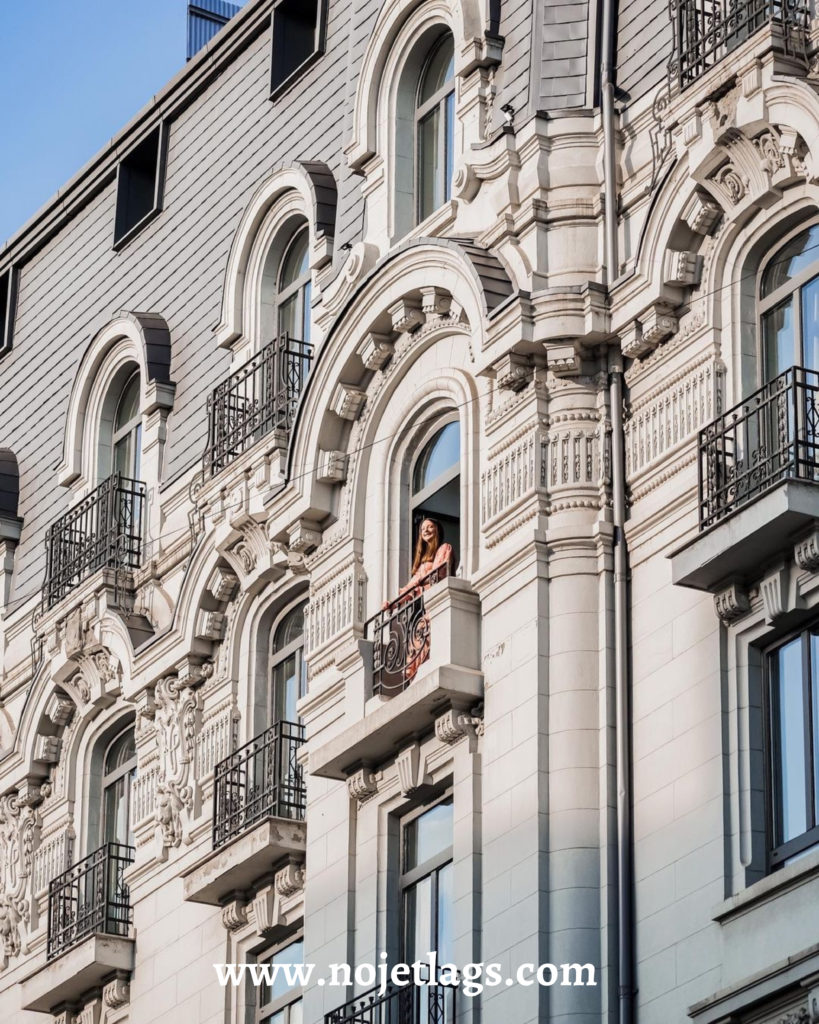
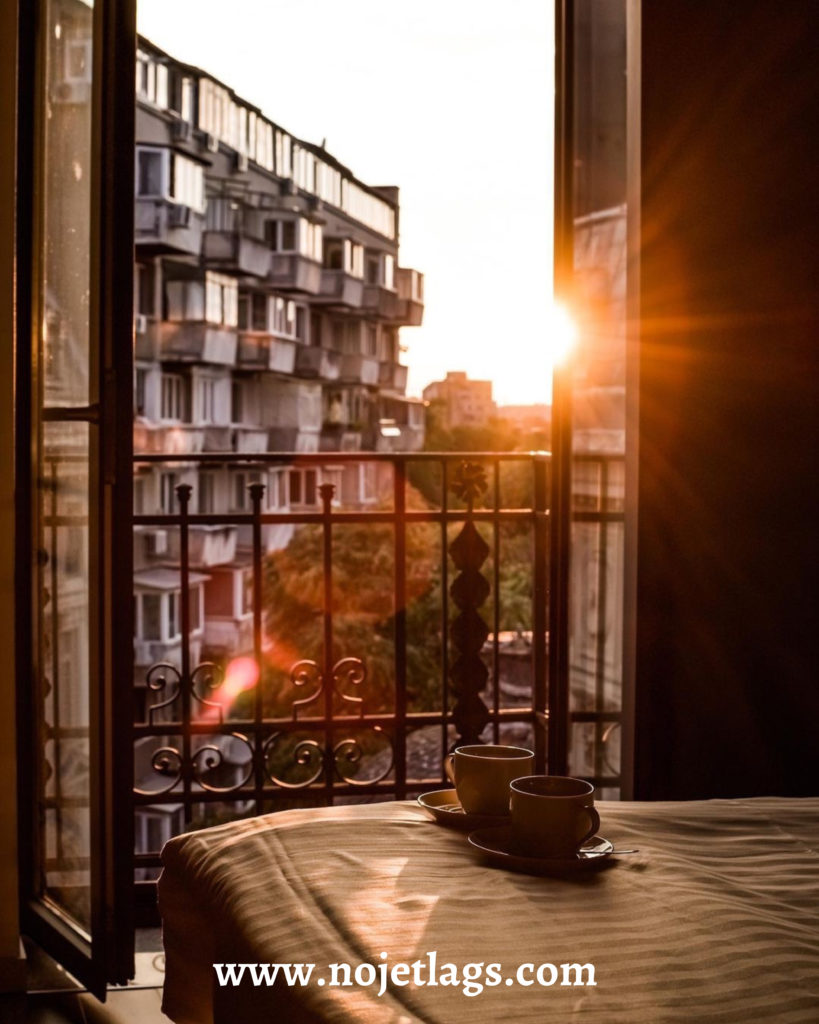
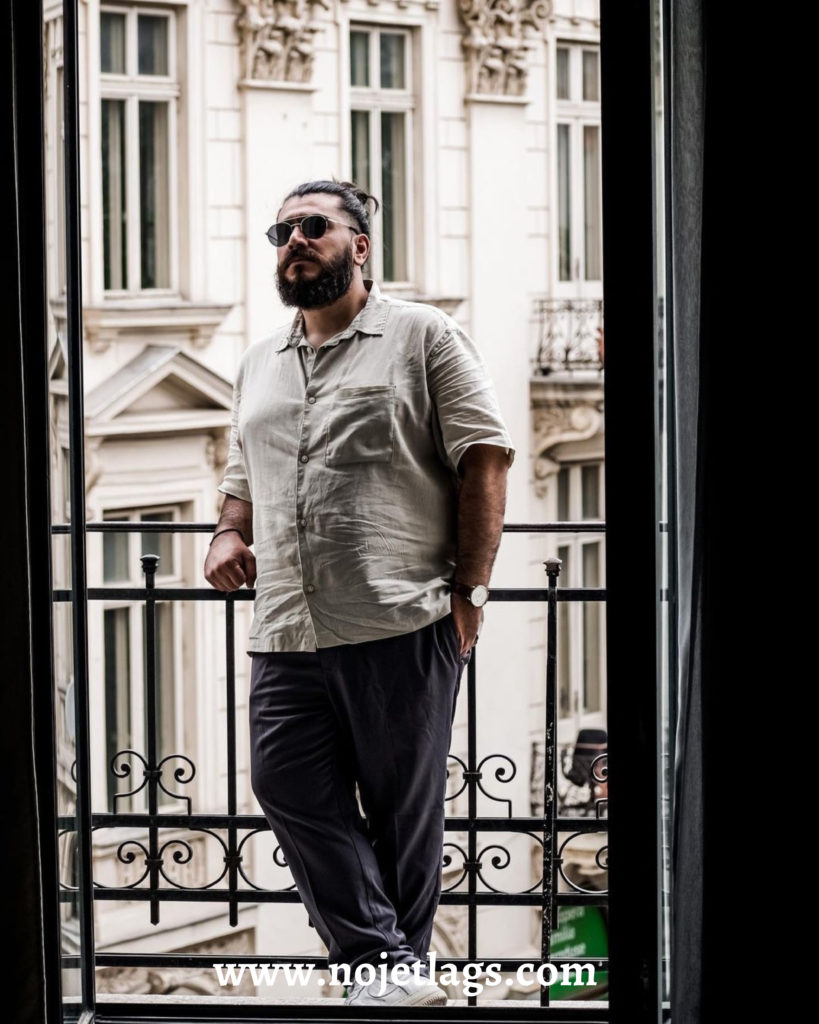
Grand Bucharest Hotel *****
📍Located at No. 4, Nicolae Balcescu, Sector 1, 010051
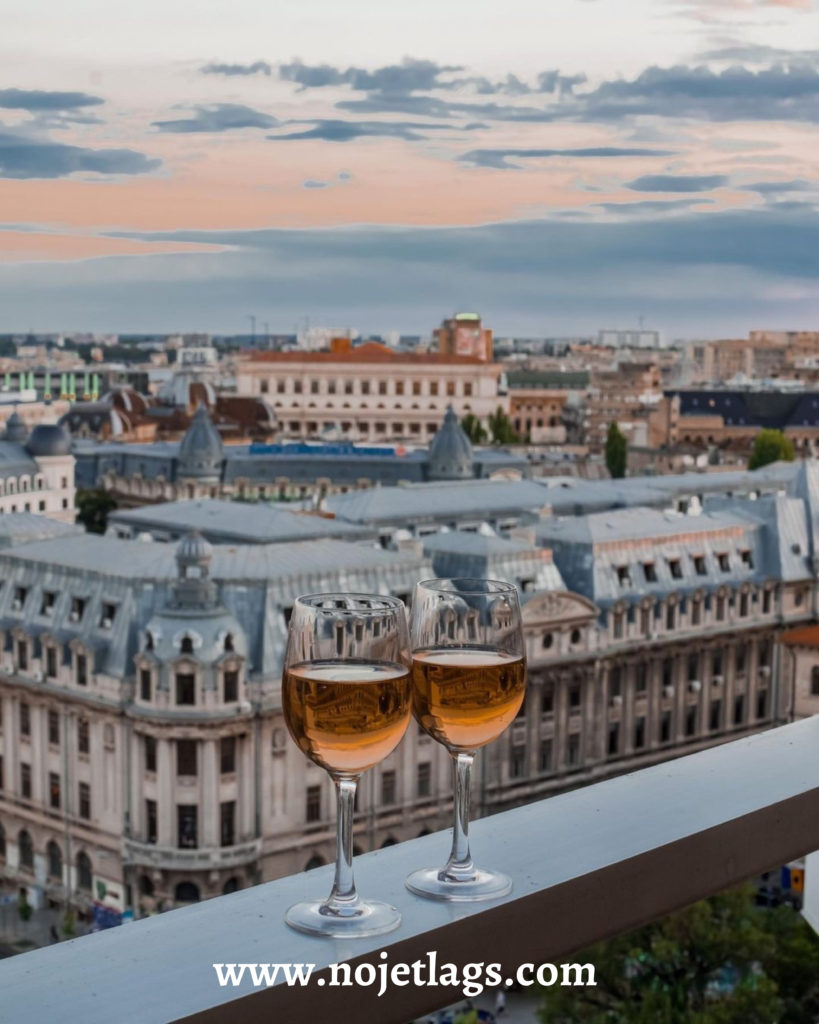
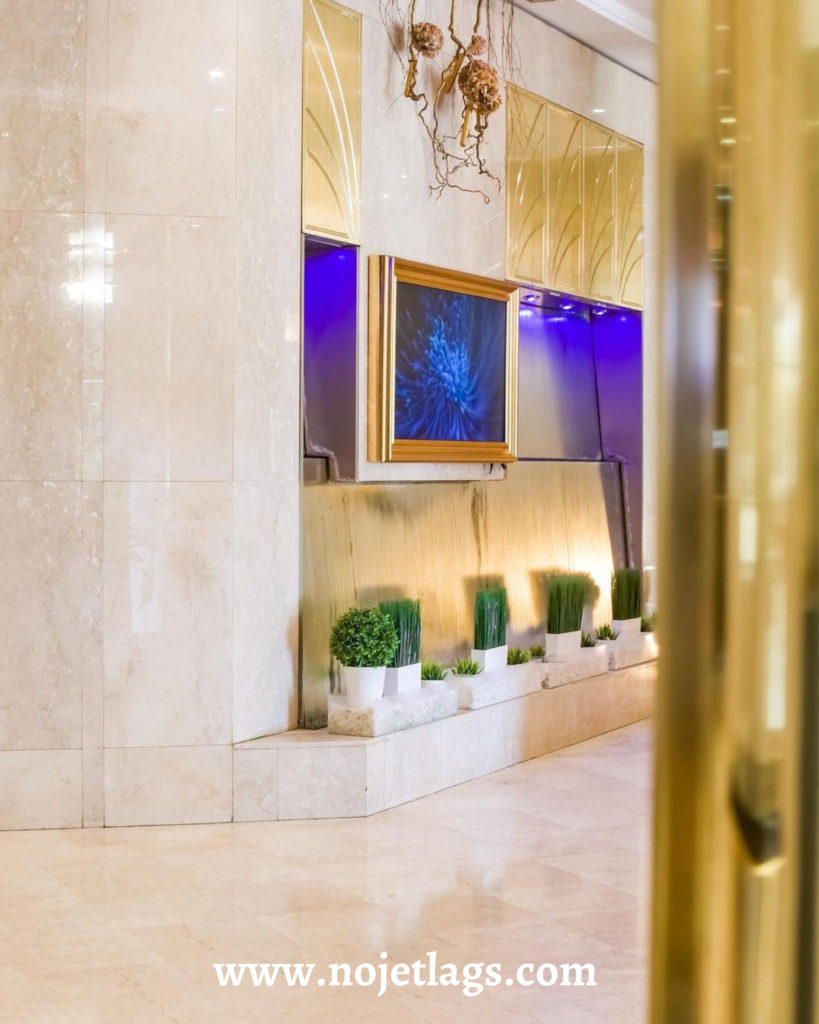
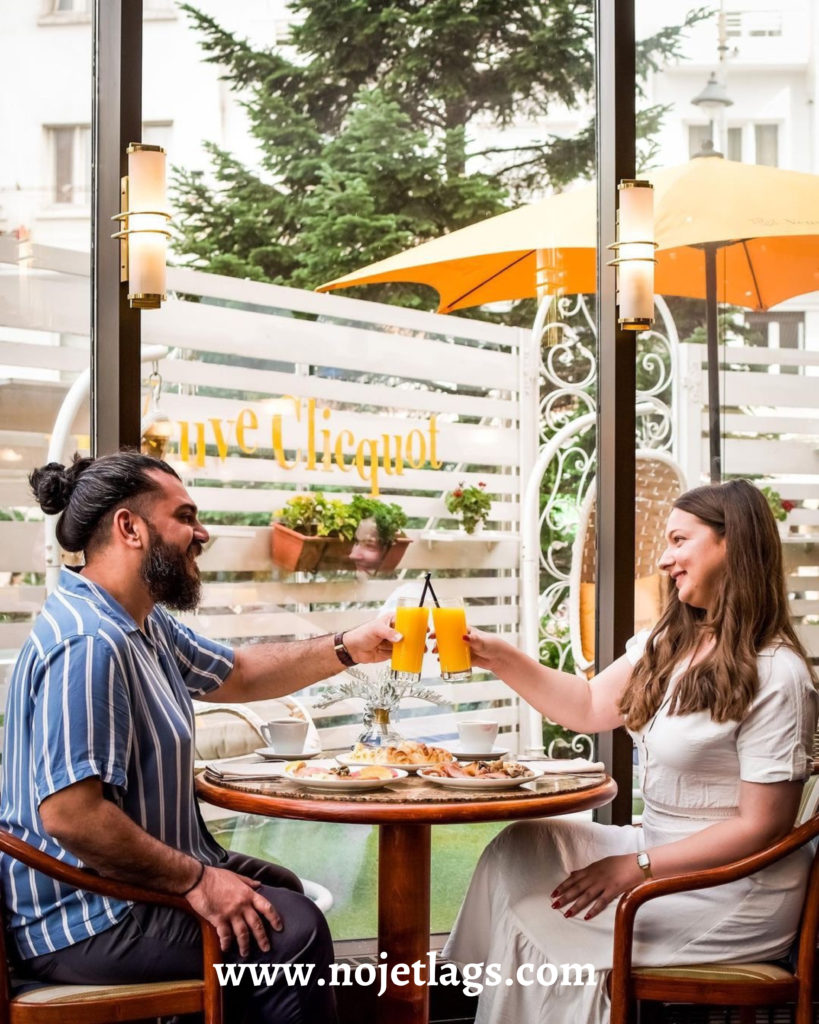
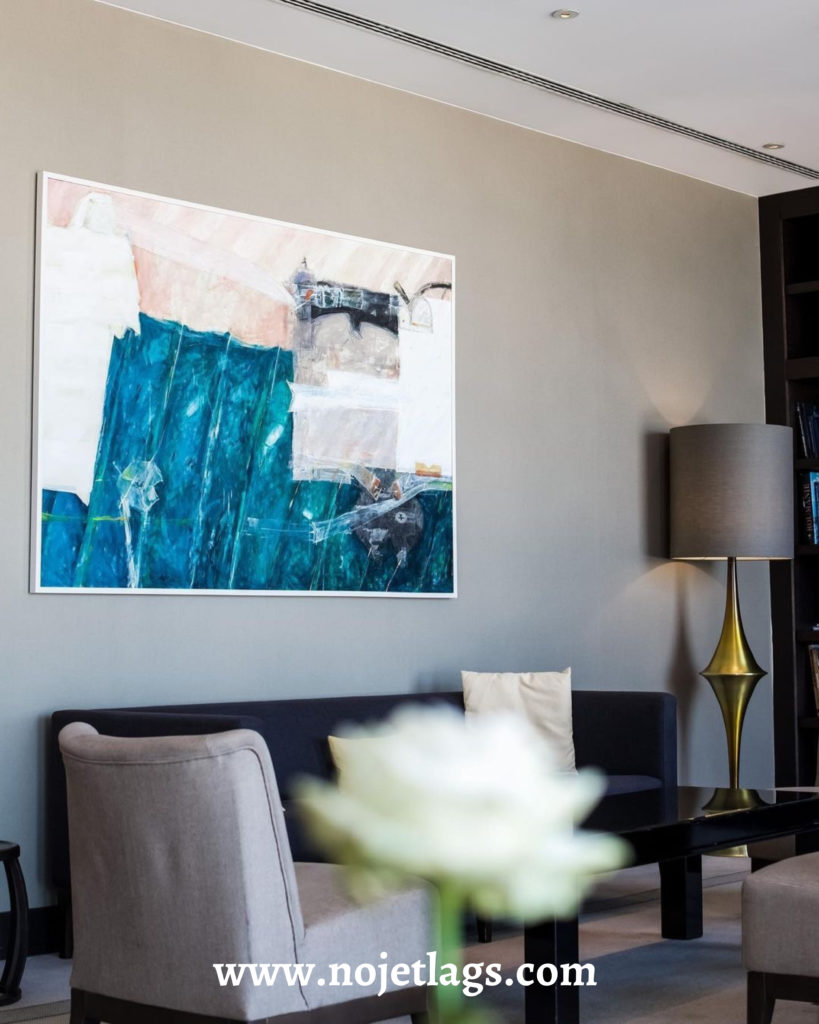
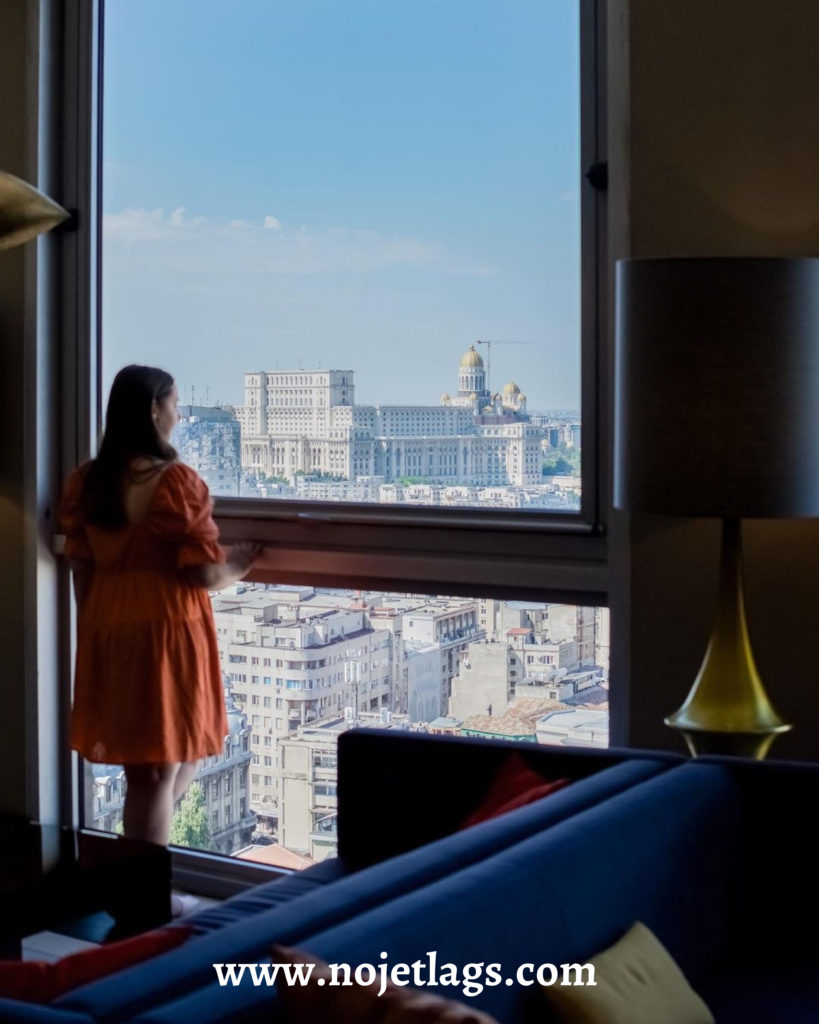
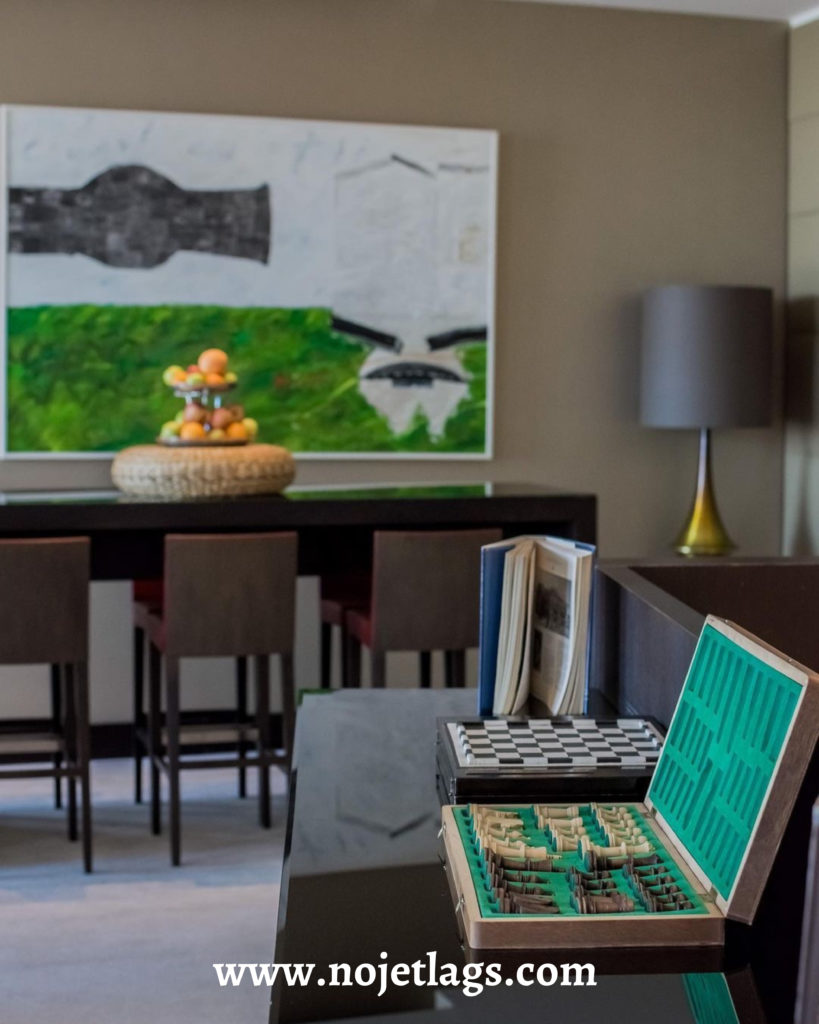
Hilton Garden Inn Bucharest Old Town****
📍Located at 12 Doamnei St, Bucharest, 030055, Romania
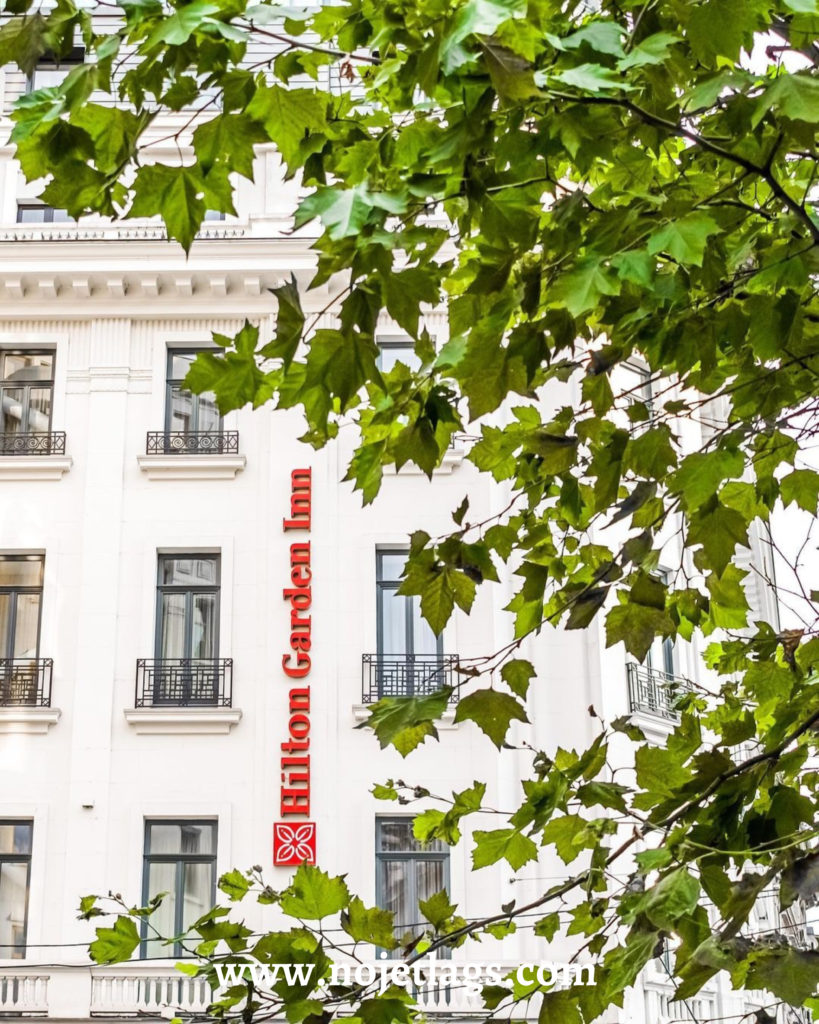
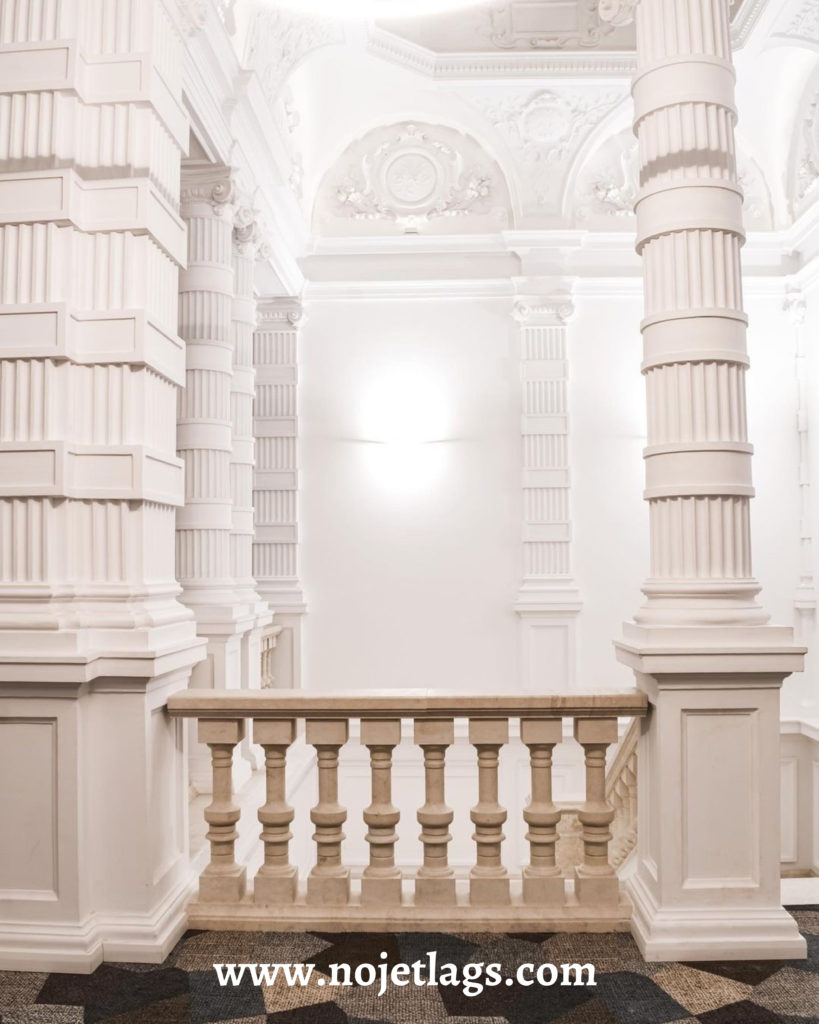
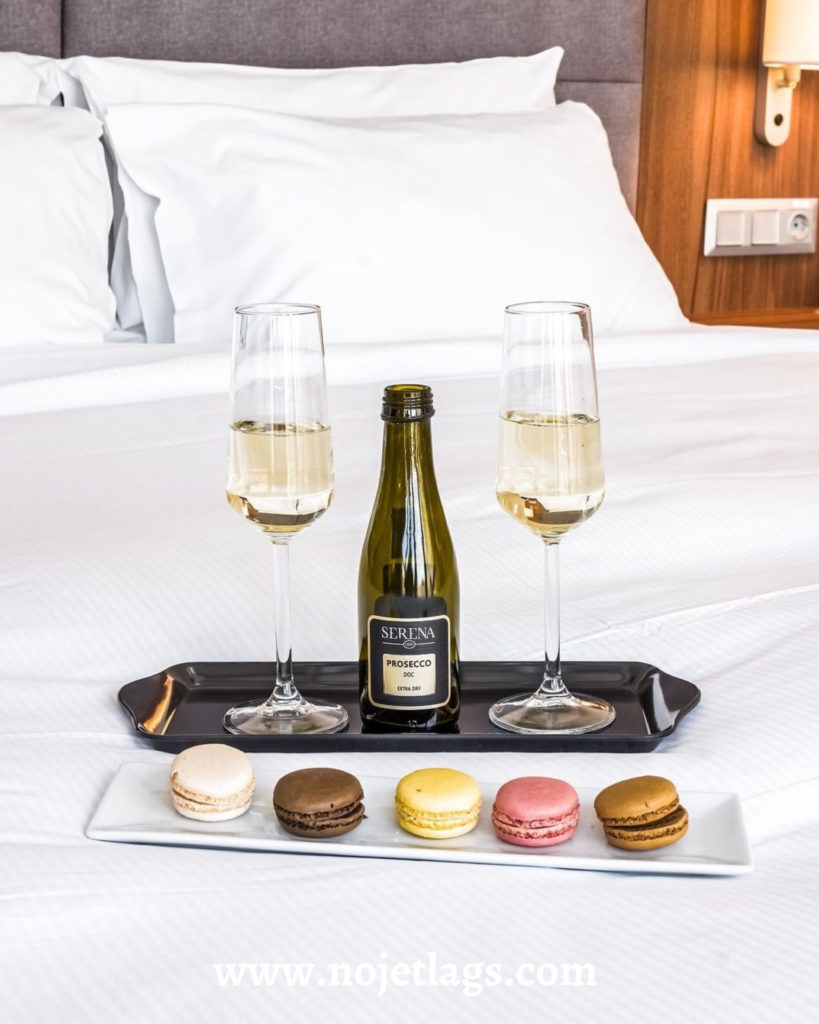
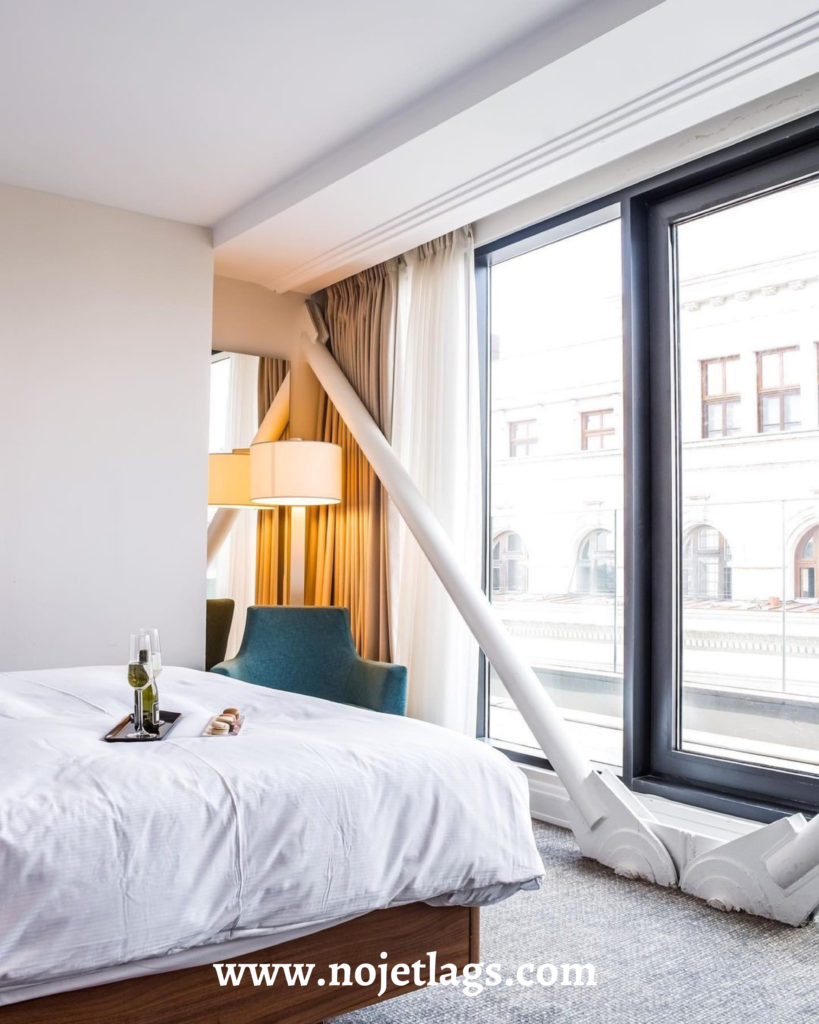
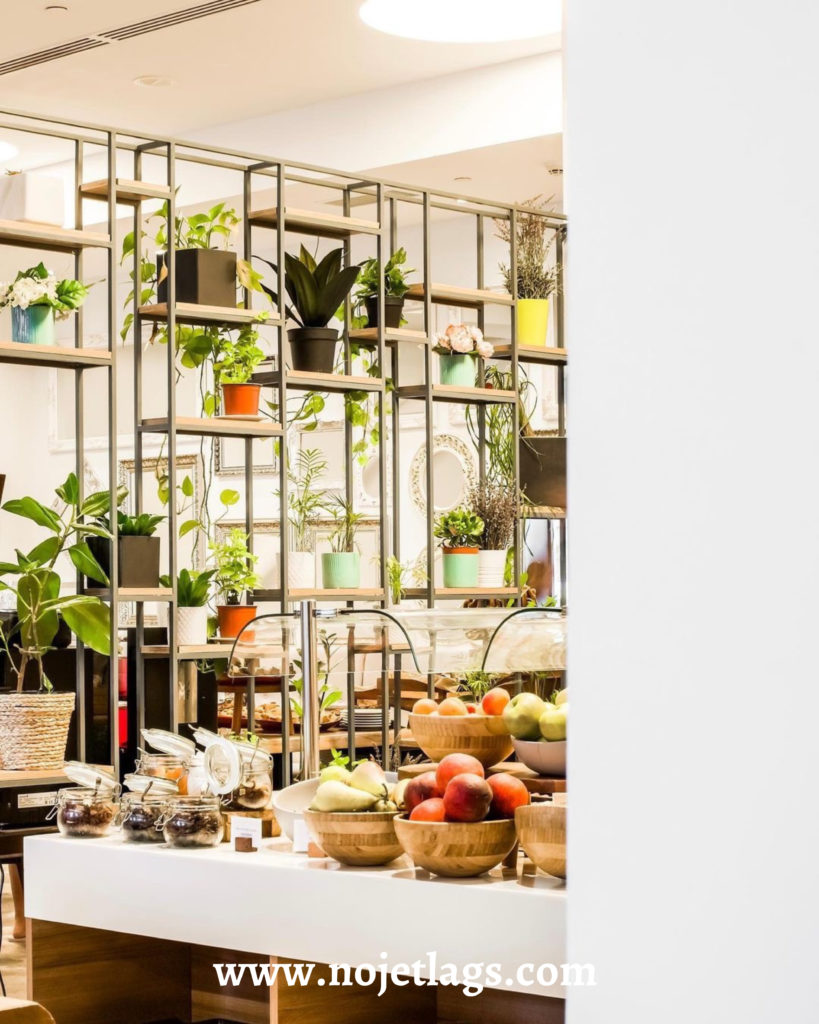
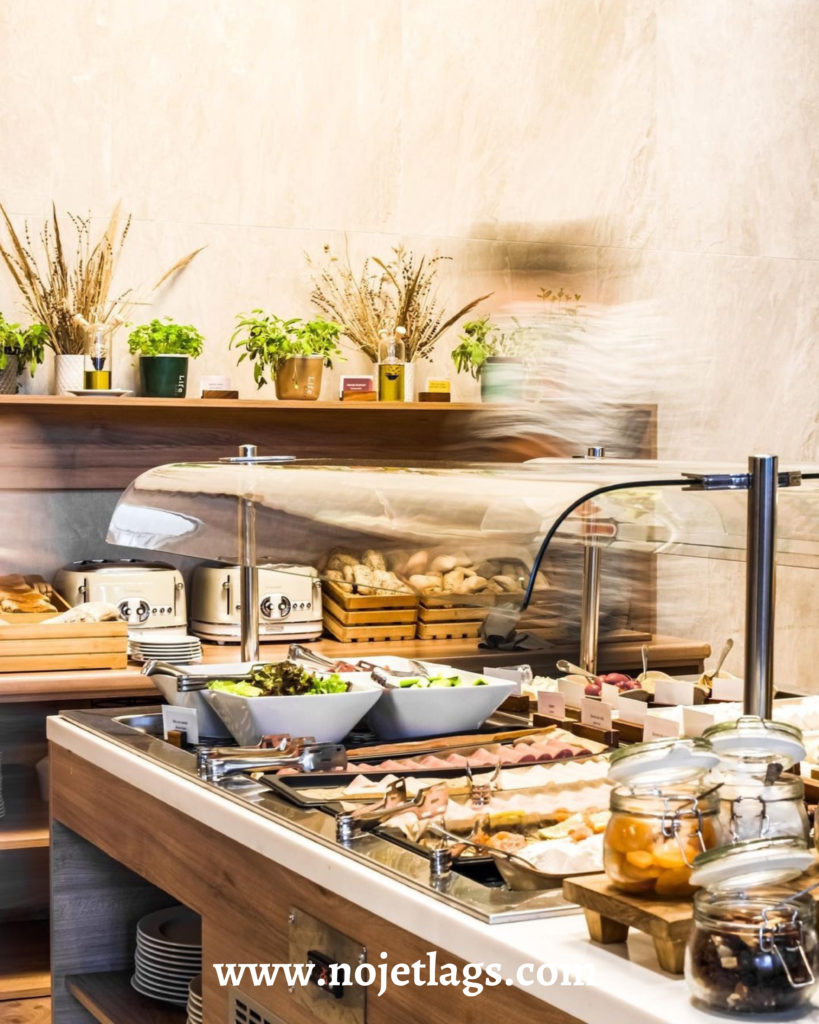
Some Useful Tips

Currency
The official currency of Romania is the Romanian Leu. Currently, 1.00 RON = 0.20€

Airport Transfer
Bucharest’s International Airport, Henri Coandă, is located 17,7 km away from the City Center.
Direct transportation to the center is offered only by taxis and the Express line 783 bus. This line runs day and night. At night, the bus leaves every 40 minutes. The bus stop can be found in front of the Arrivals Terminal and Departures Terminal. The price for a trip of 90 minutes is 3 lei. Tickets can be purchased in card desks or automated ticket machines, in front of the Arrivals Terminal. Mind that you have to validate the travel card inside the bus as well as that the drivers don’t sell tickets. The bus route has 18 stops, and it usually takes about 40 minutes to get from the airport to the last stop Unirii Square.
A map of the 783 route is available here.
In addition, the airport is connected to the northern railway station through the Express line 780 bus as well as the CFR train. For CFR trains, you can check the schedule here. An one-way ticket costs RON 4 (less than EUR 1), and you can buy them online, from ticket vending machines, or, in some cases, from the train staff after boarding the train. The trains run 24 hours a day, every 40 minutes, and a one-way trip takes about 20-25 minutes.
Bucharest airport taxi rides to the city usually cost around 15€ while the total trip should take approximately 20 minutes. Licensed taxis await just outside the exit of the airport. However, you should be careful as some taxi drivers tend to negotiate the cost of the trip.

Transportation
Bucharest has one of the largest public transport networks in Europe. Buses and trams run from early in the morning (around 04:30) to around 22:50 (earlier at weekends), after which the night buses take over. There are also trolleybuses, trams, and a subway line. Regarding tickets, to use buses, trams, or trolleybuses, you must first purchase an ‘Activ’ or ‘Multiple’ magnetic card (EUR 0.80) from any STB street kiosk, which you then load with credit that is discharged as you enter the transport vehicles. Trips cost EUR 0.60 each, and you can travel for 90 minutes between the lines, and the minimum amount of credit you can buy is EUR 1. Children under seven ride free.
One has to validate the card each time one enters the tram or bus.
For more information regarding timelines and tickets visit here.
Bucharest’s metro has four lines and runs from 05:00 in the morning to around 23:00. Tickets for the metro can be purchased at all metro stations. Tickets valid for two journeys cost 1 euro, while tickets valid for ten journeys cost a bargain 4 euros. You can also buy a daily ticket for .6 euros, while a weekly season ticket costs 5.1 euros.
Another way of transportation is by renting a electric scooter or bicycle/city bikes.
Ride-sharing apps Taxify and Uber are well-established in Bucharest as well.

Budget
The average daily cost for Bucharest is estimated at 104 euros per person per night. Regarding the accommodation, the average price for a hotel room is 48 euros per night per person. Meals for one day are estimated to 44 euros per day and the cost of entertainment including tourist attractions and sightseeing is approximately 11 euros. Alcohol in Bucharest is also considered cheap.

Safety
Bucharest is considered to be a safe destination for tourists in general. However, pickpockets and scammers can be found at the main attractions and therefore it is advisable to keep a close look at your belongings. The different currency may hide some misunderstandings as well so take your time to do your calculations in order no to be surprised. Furthermore, the yellow taxies tend to overcharge tourists.
